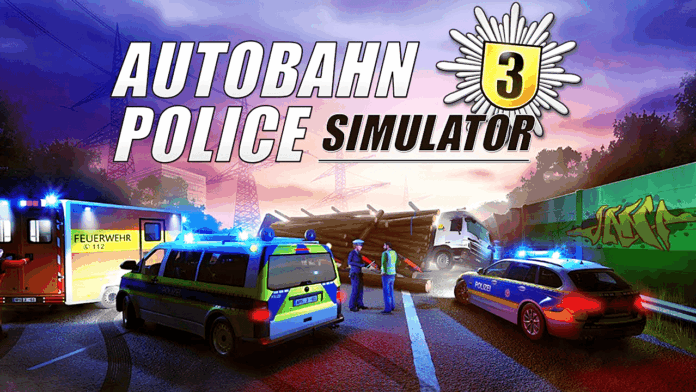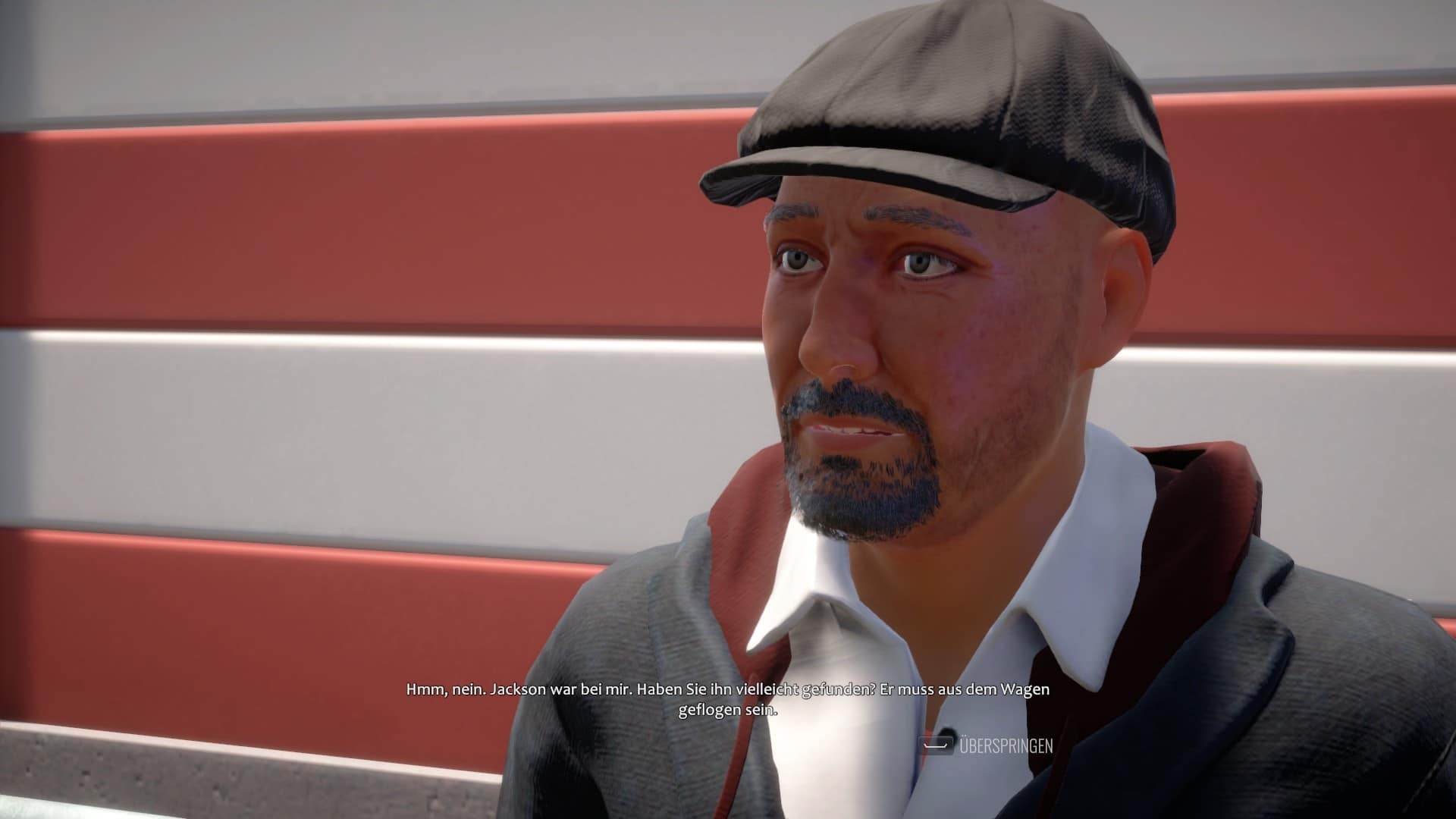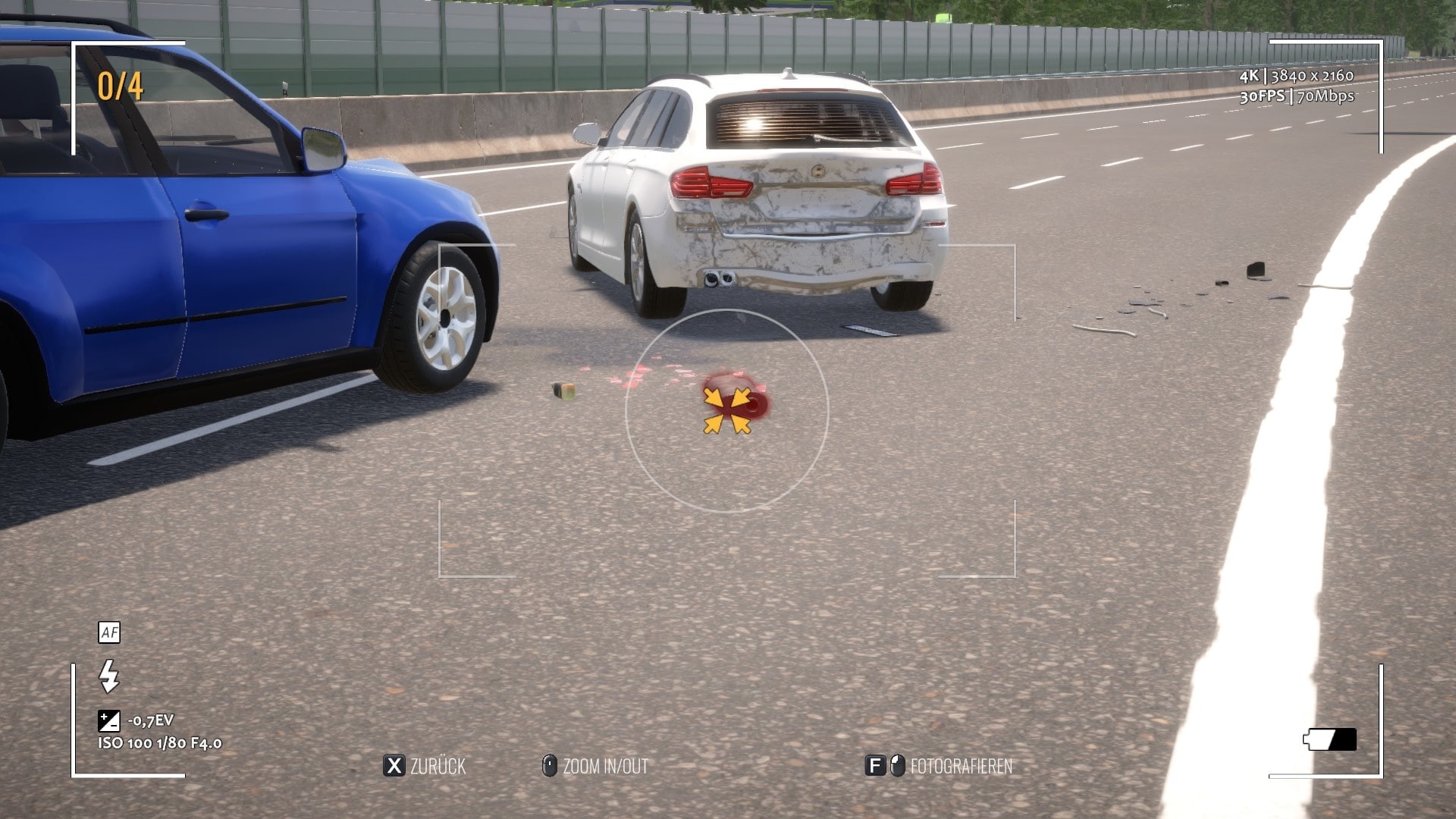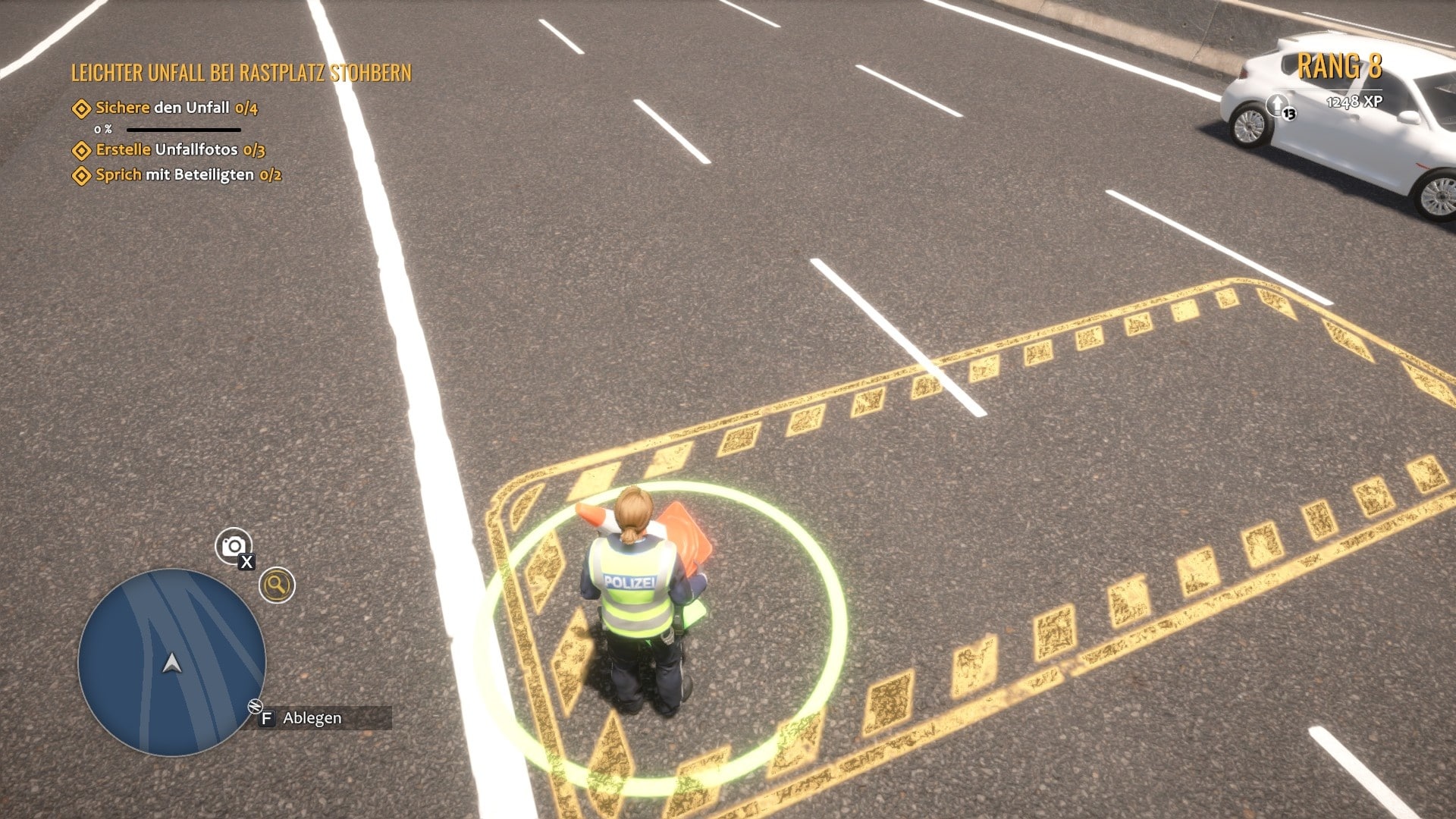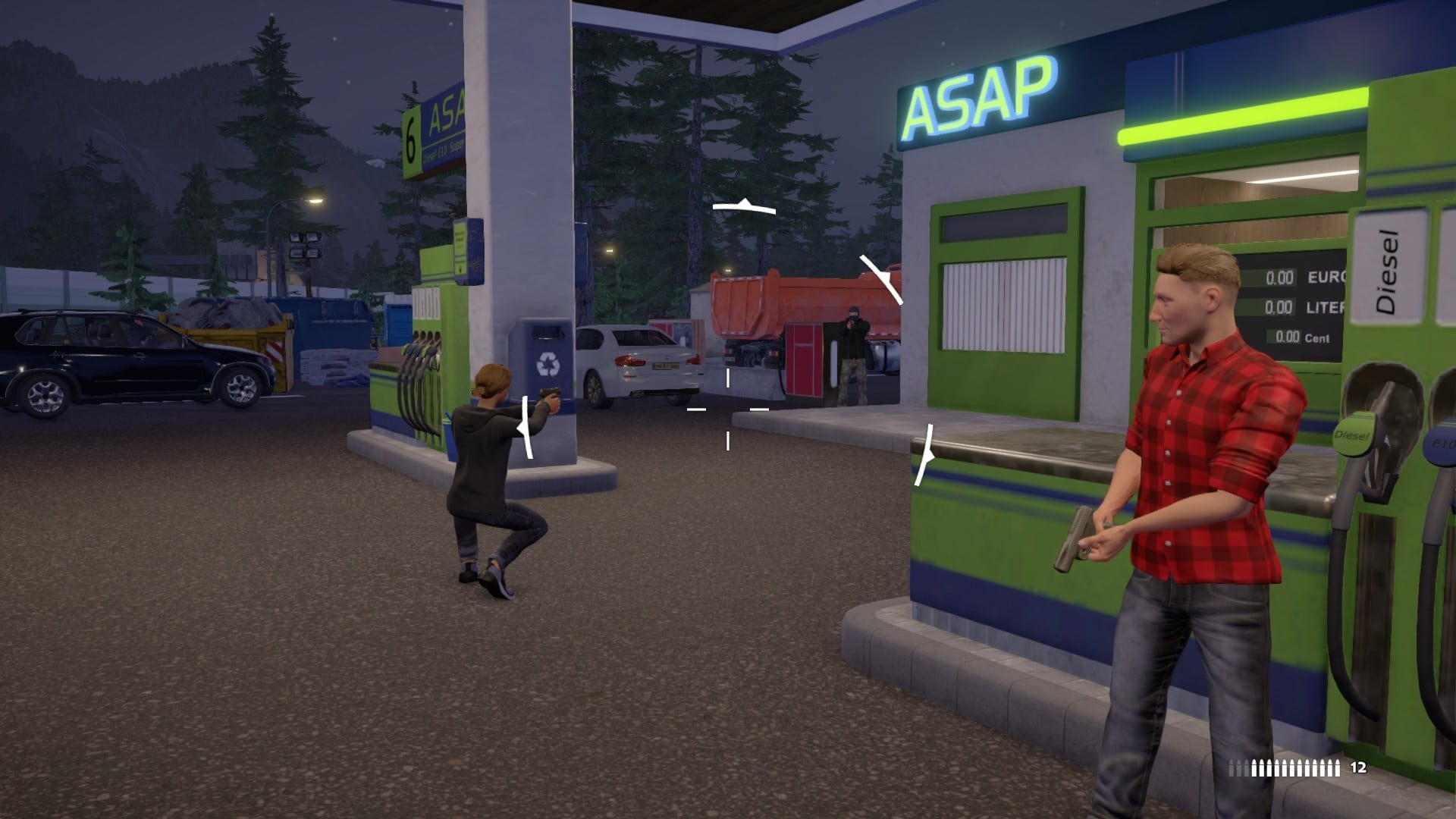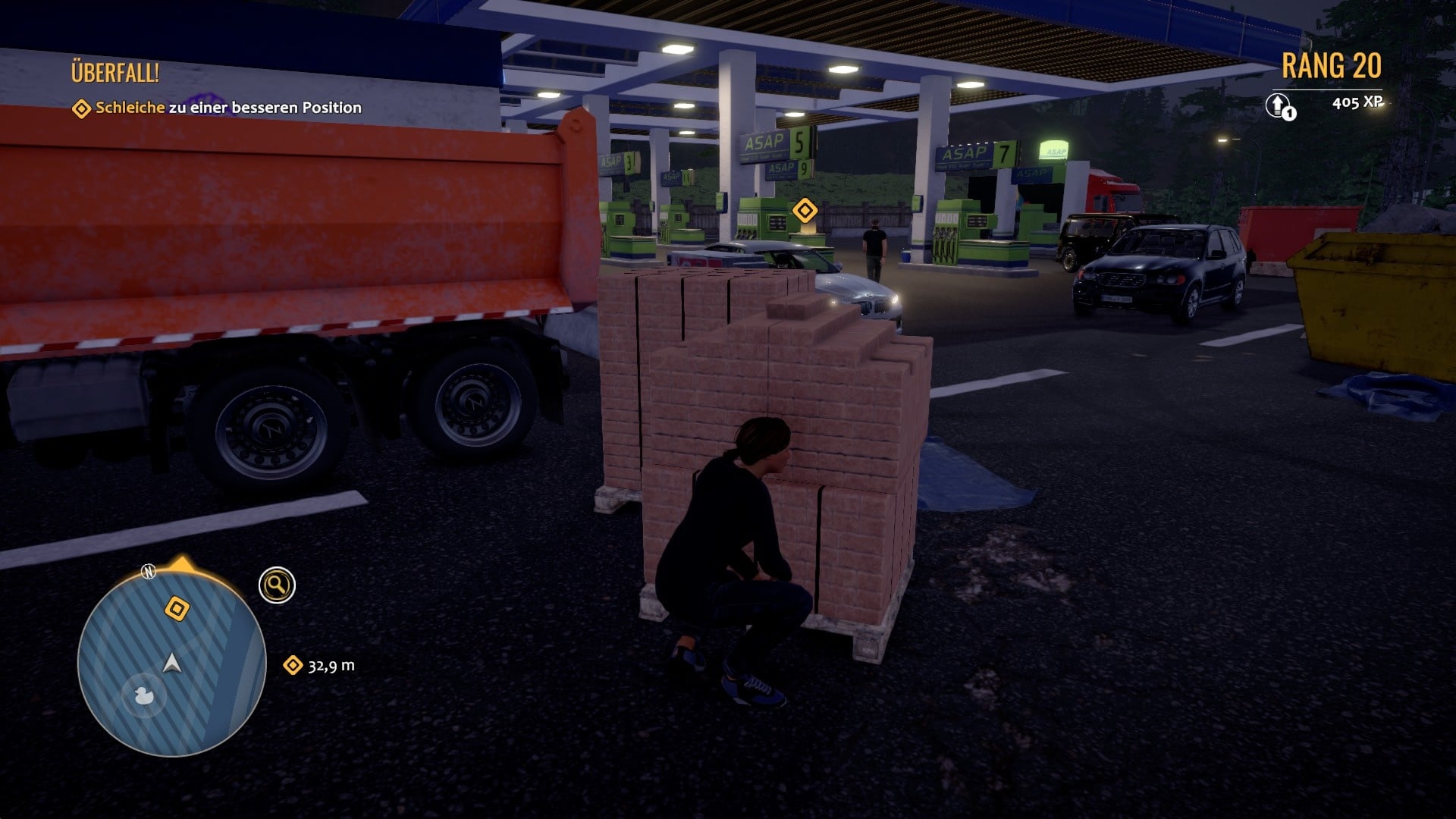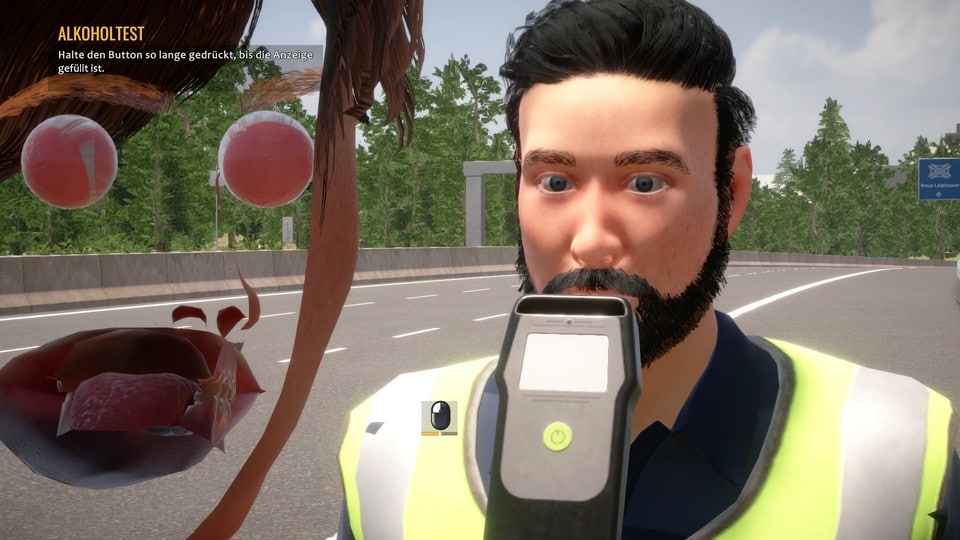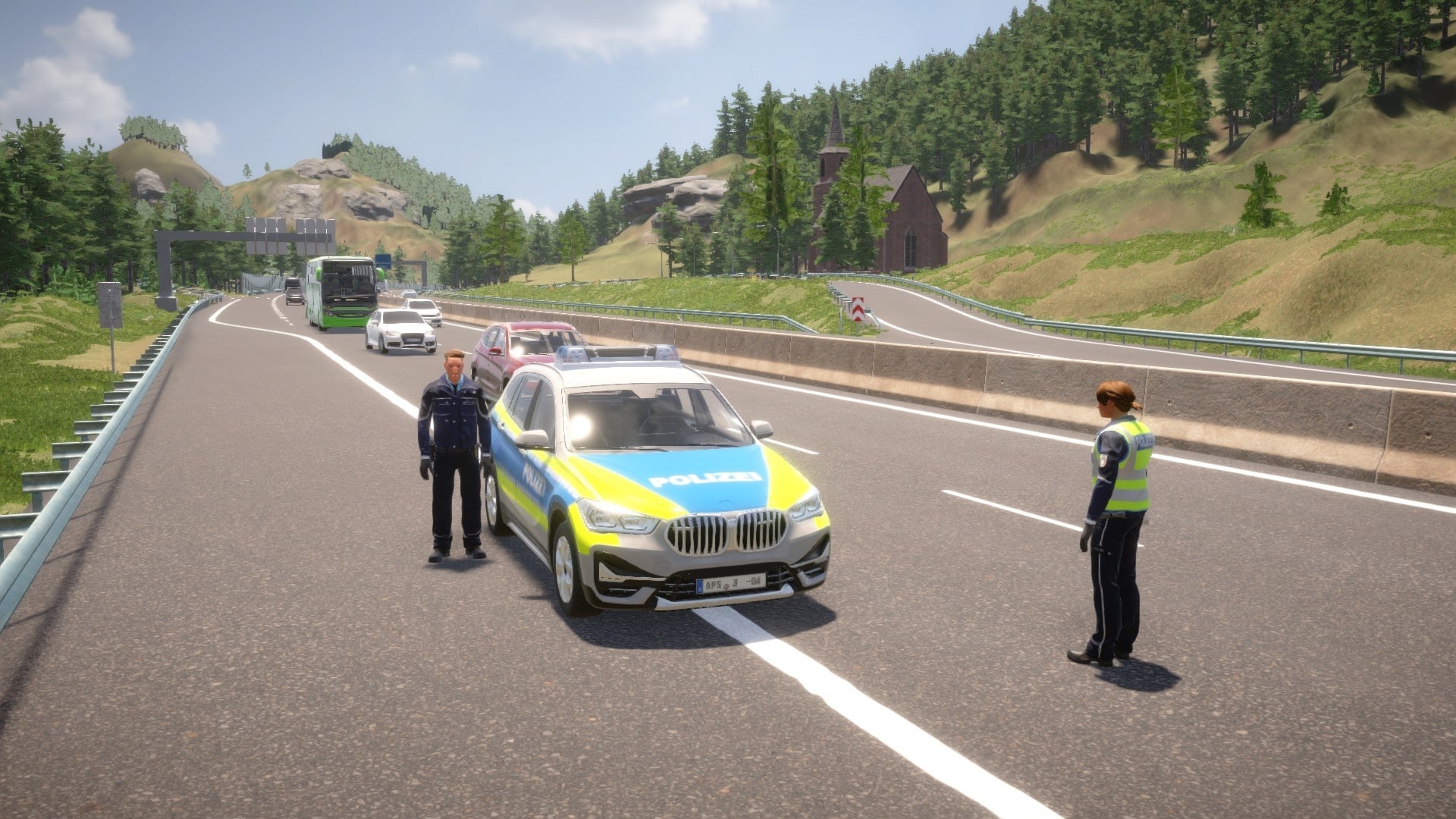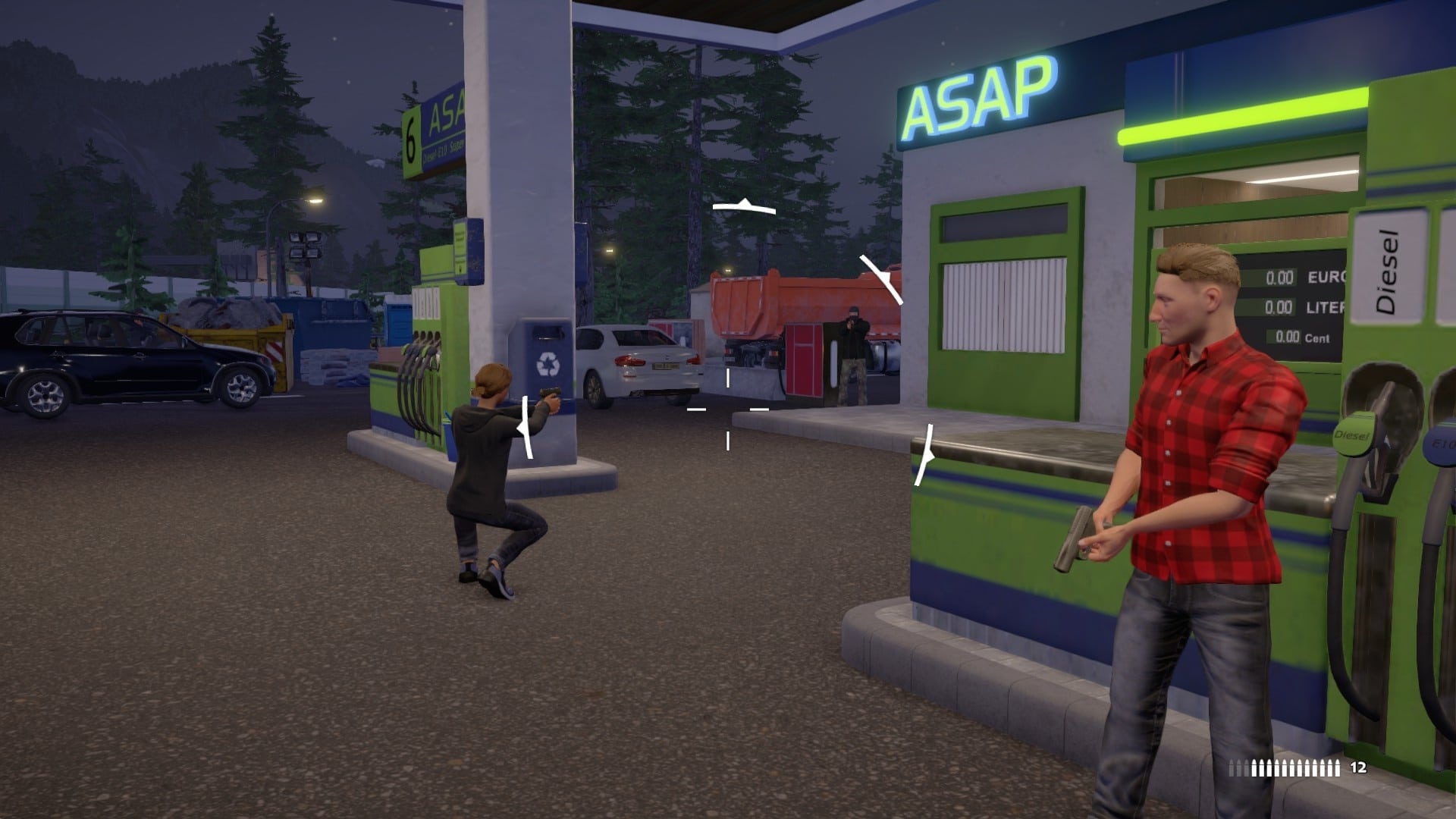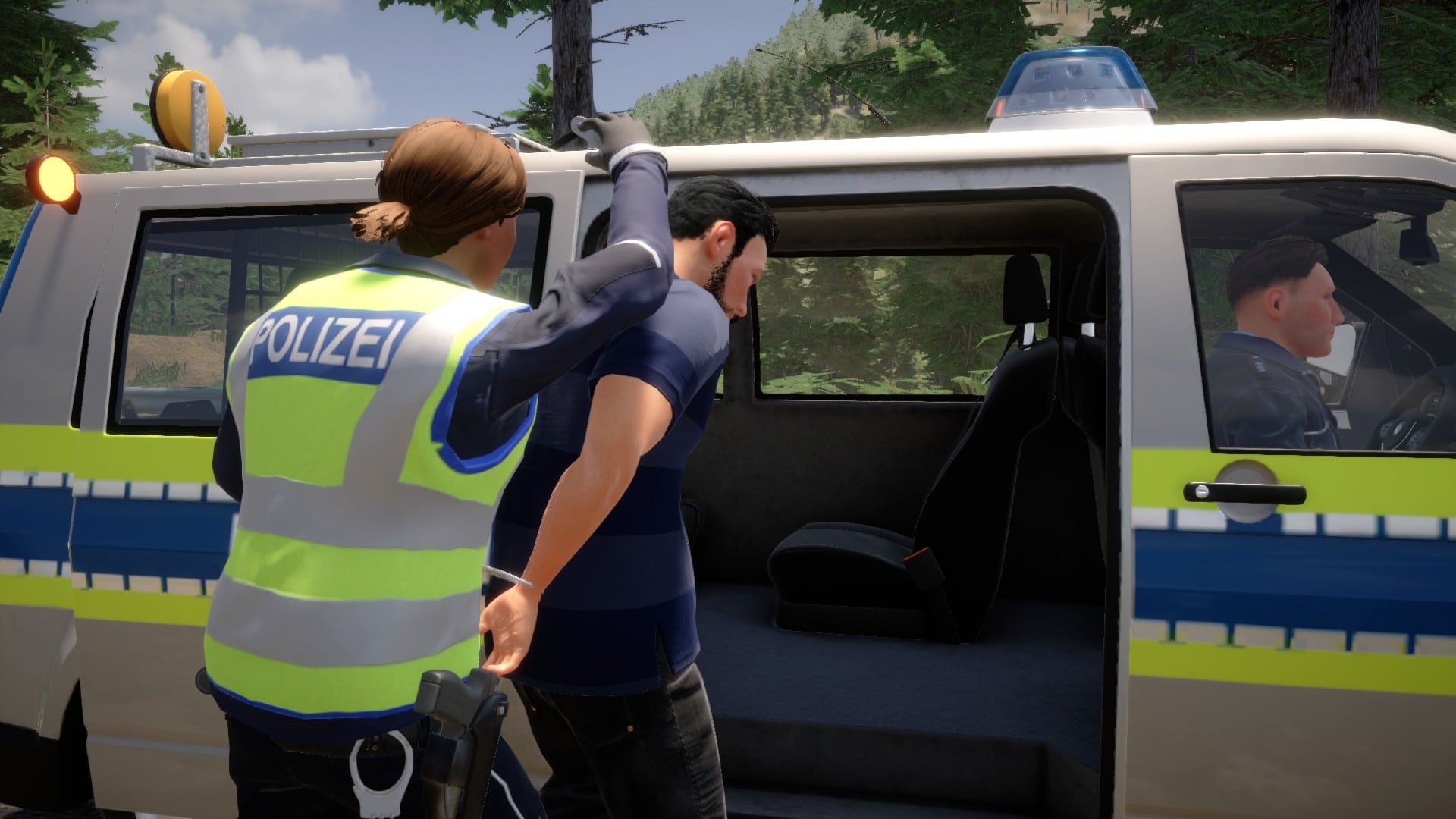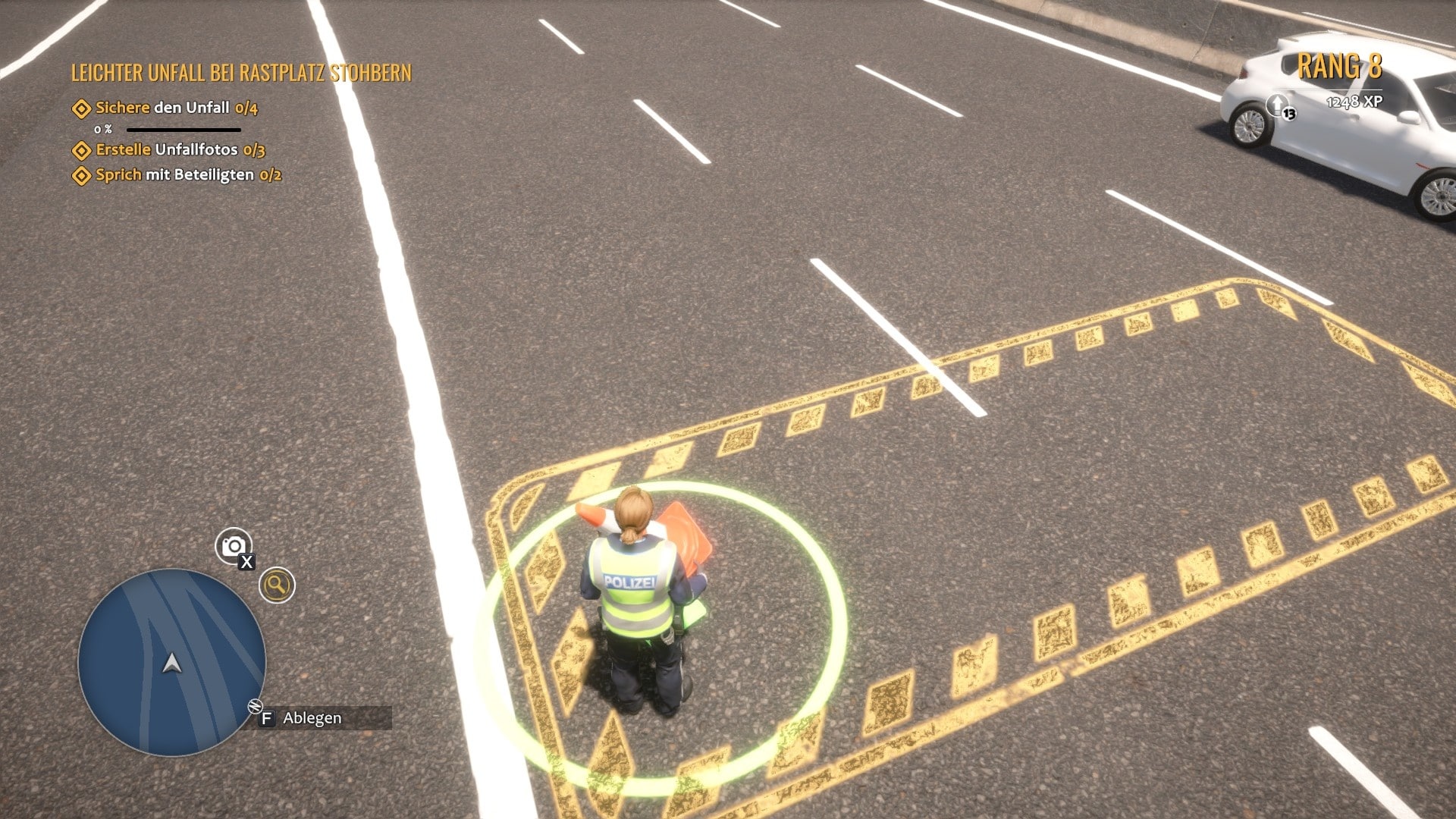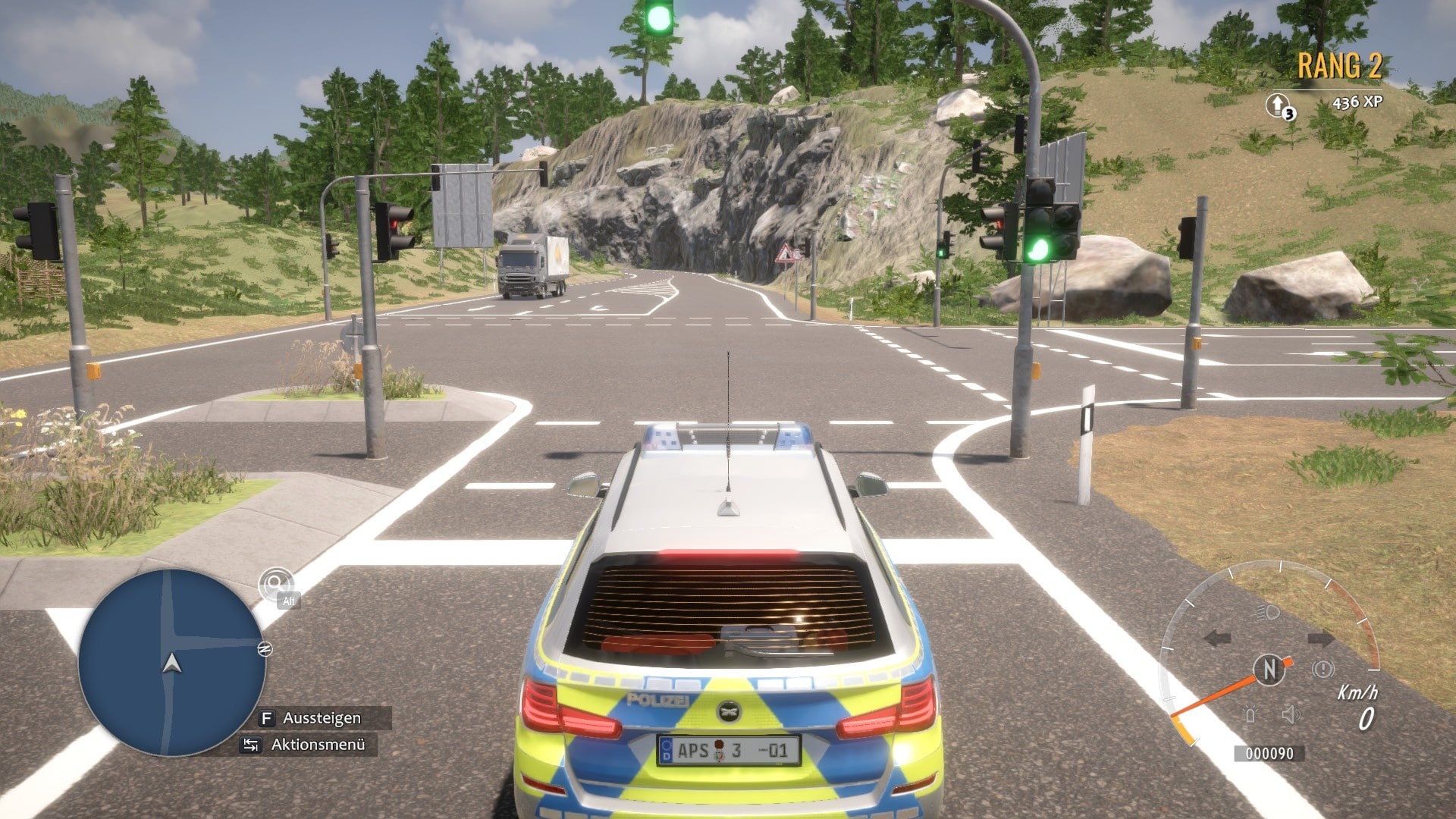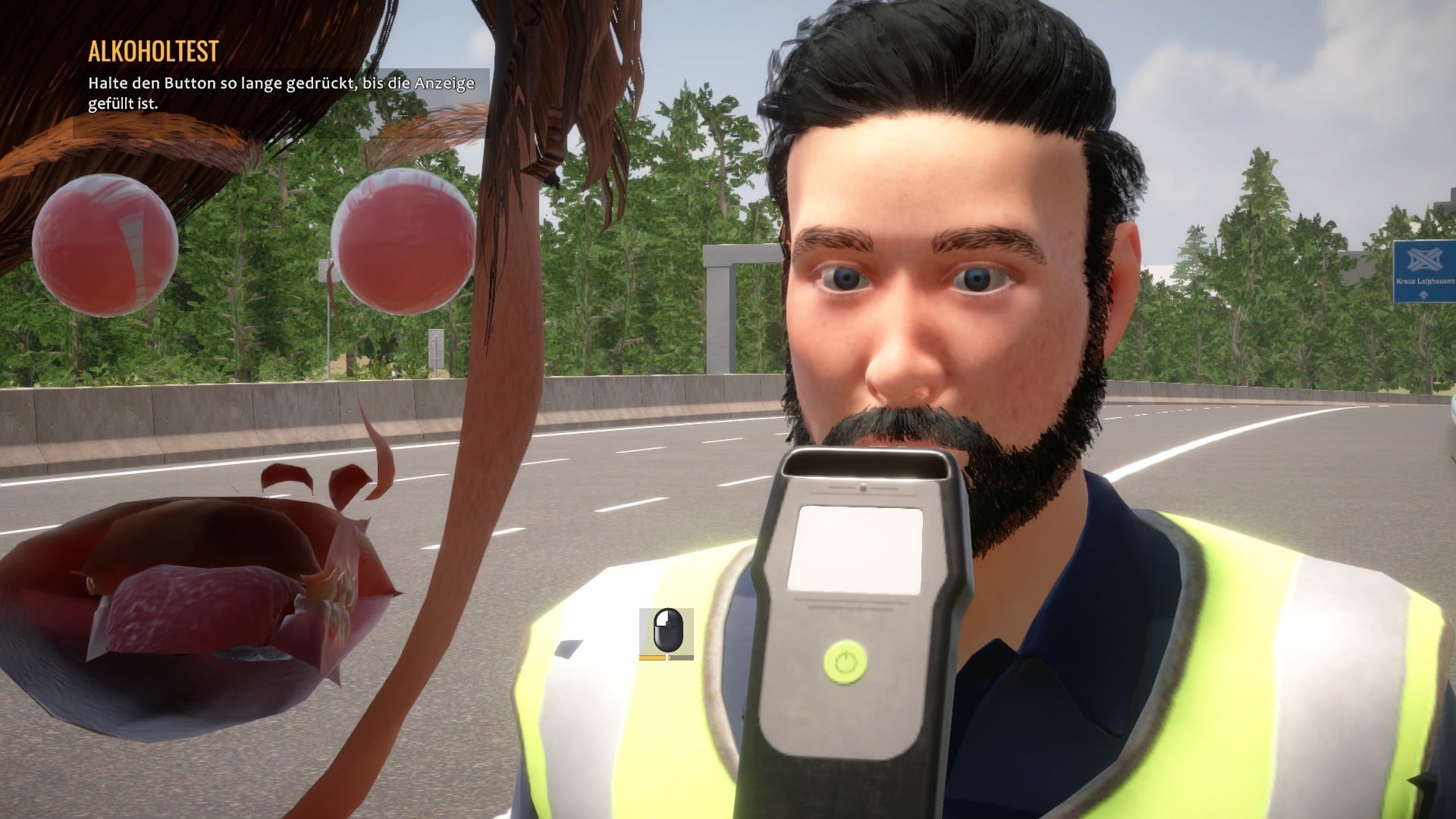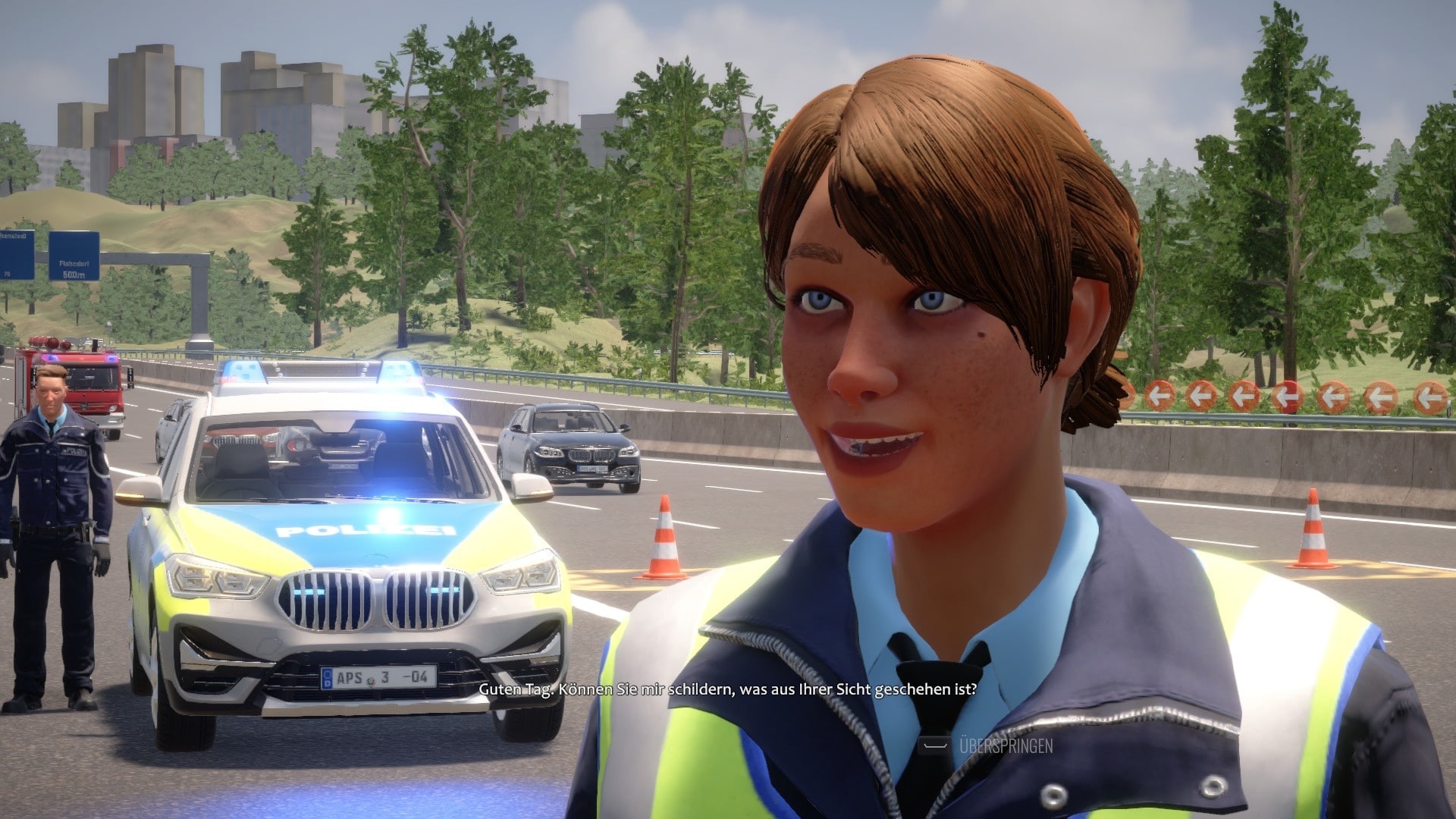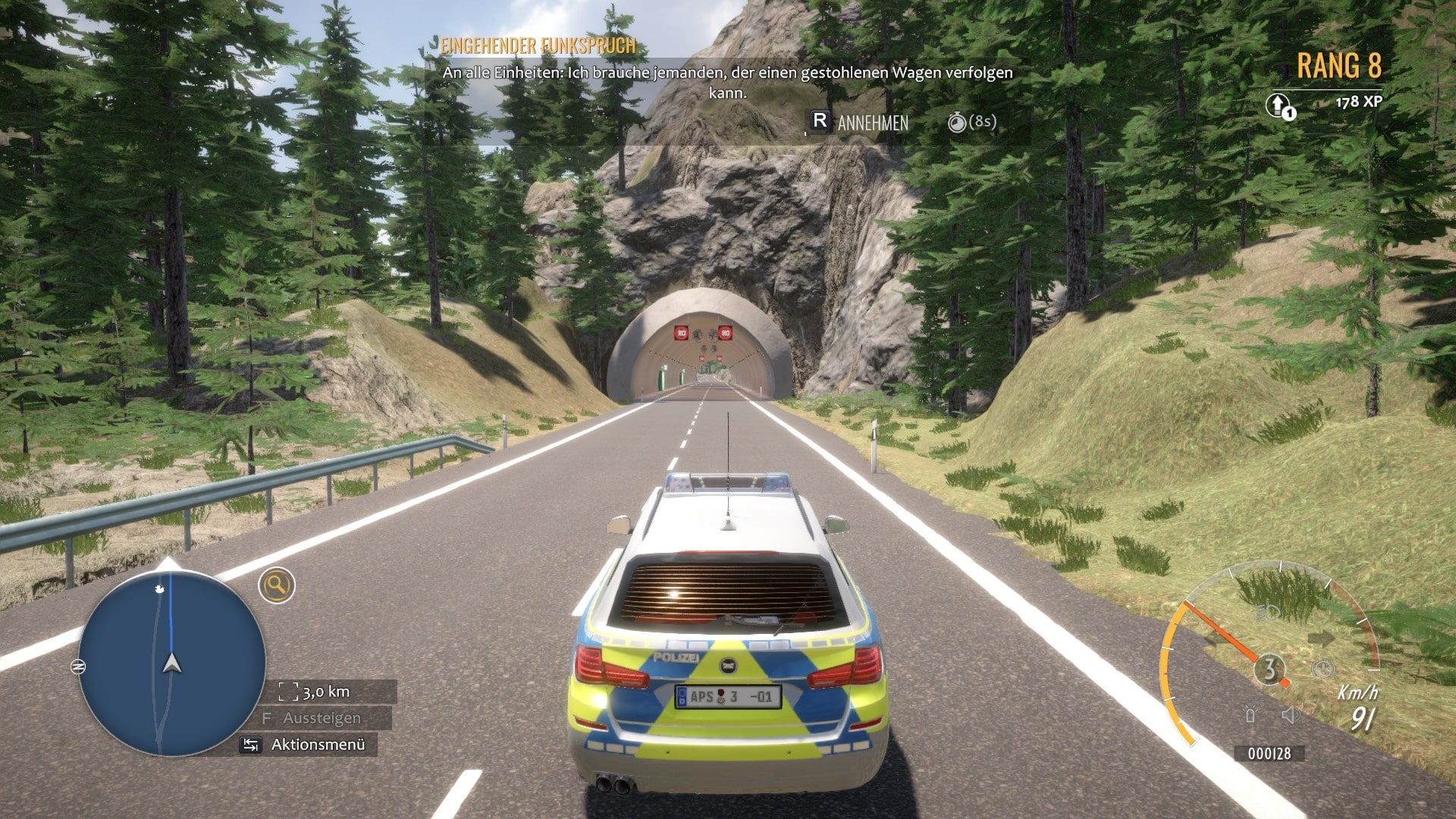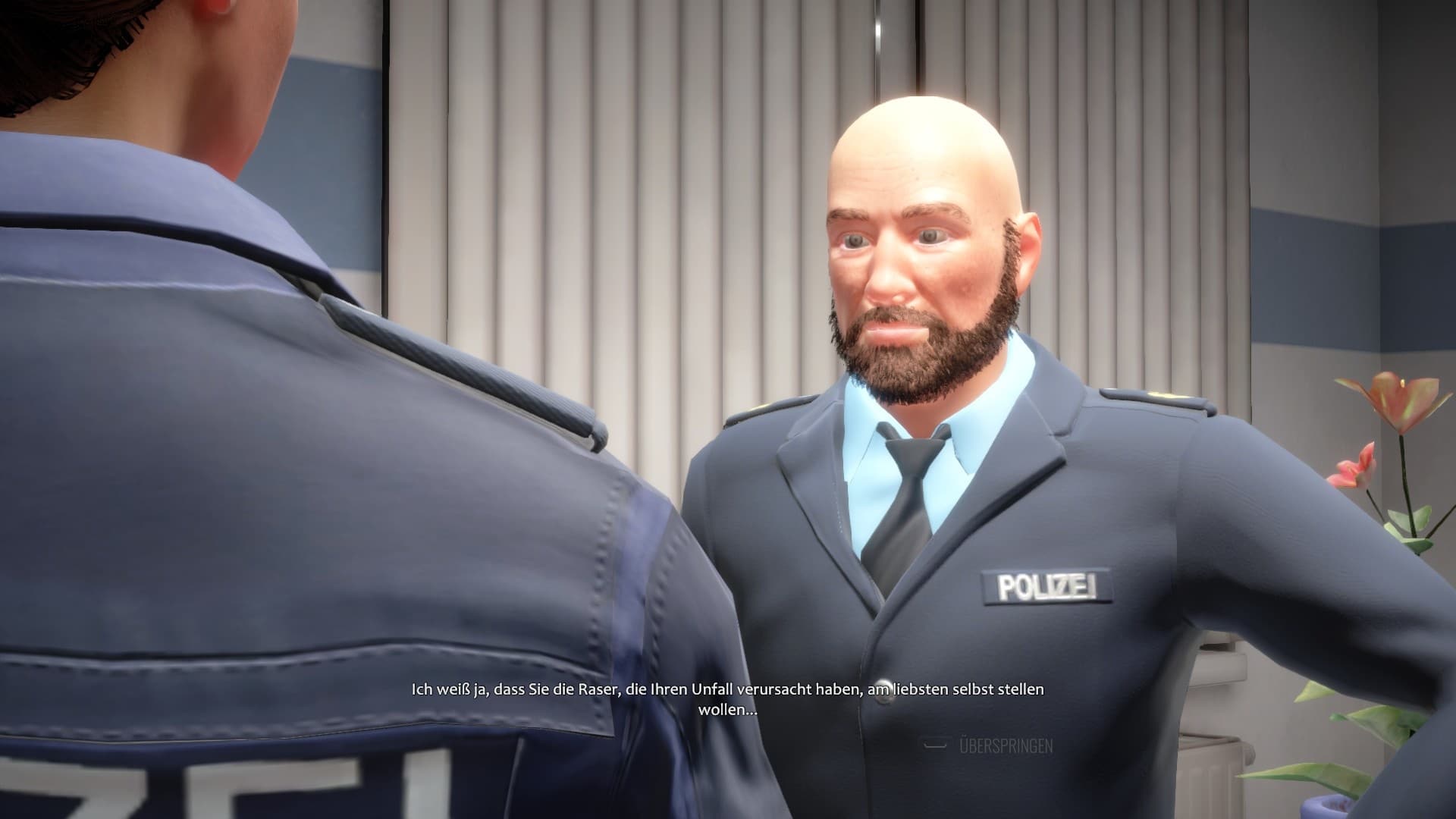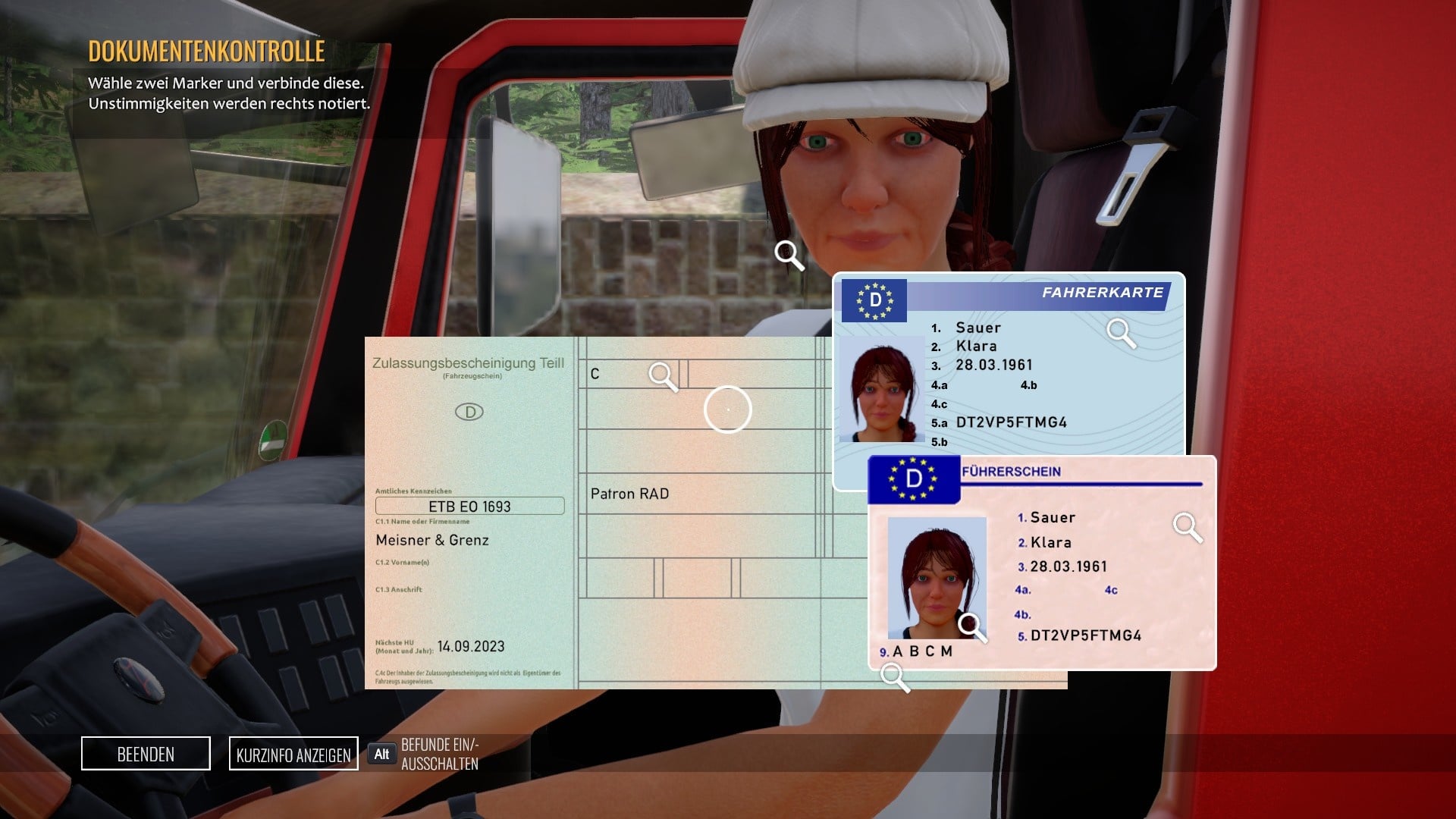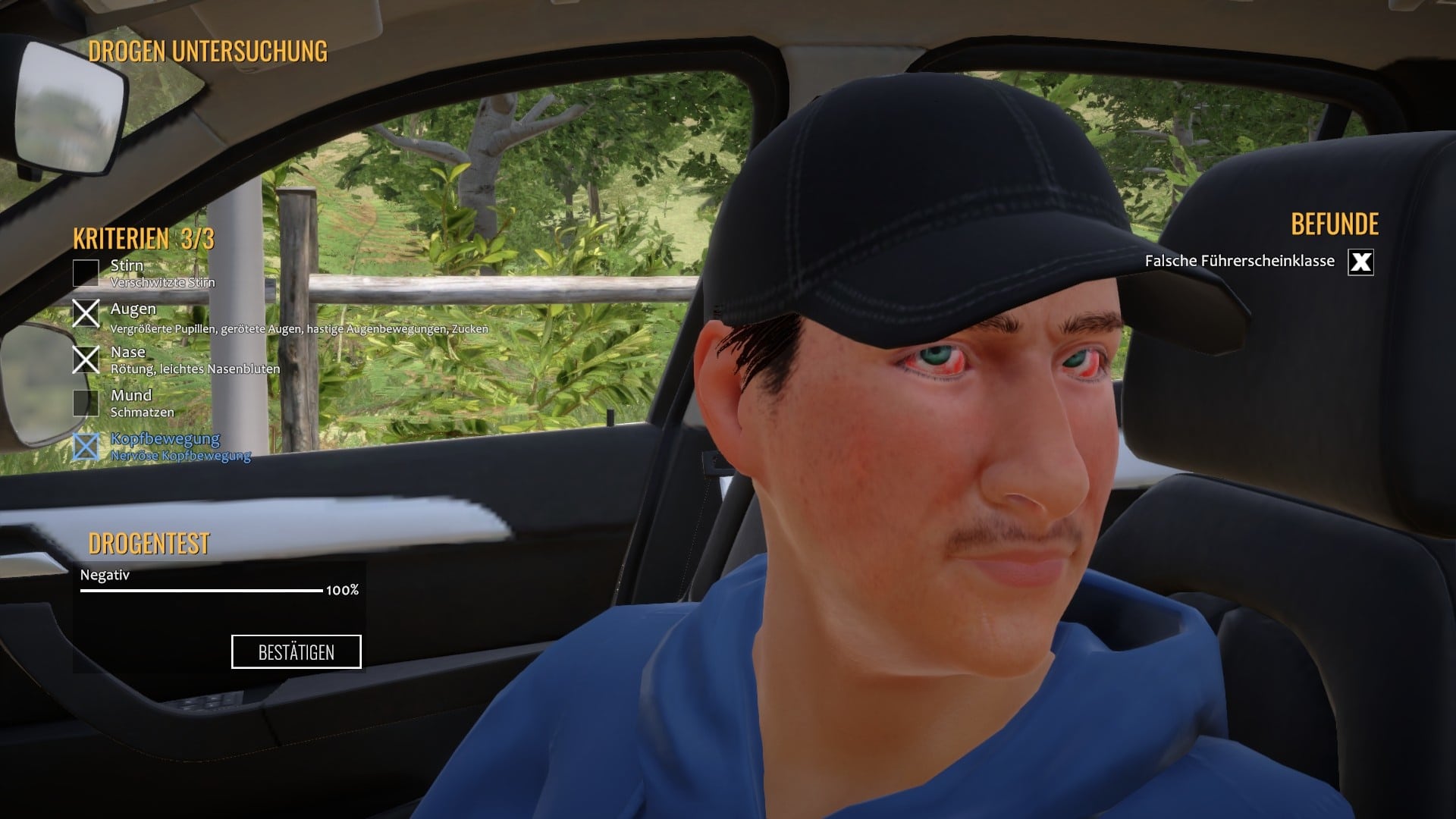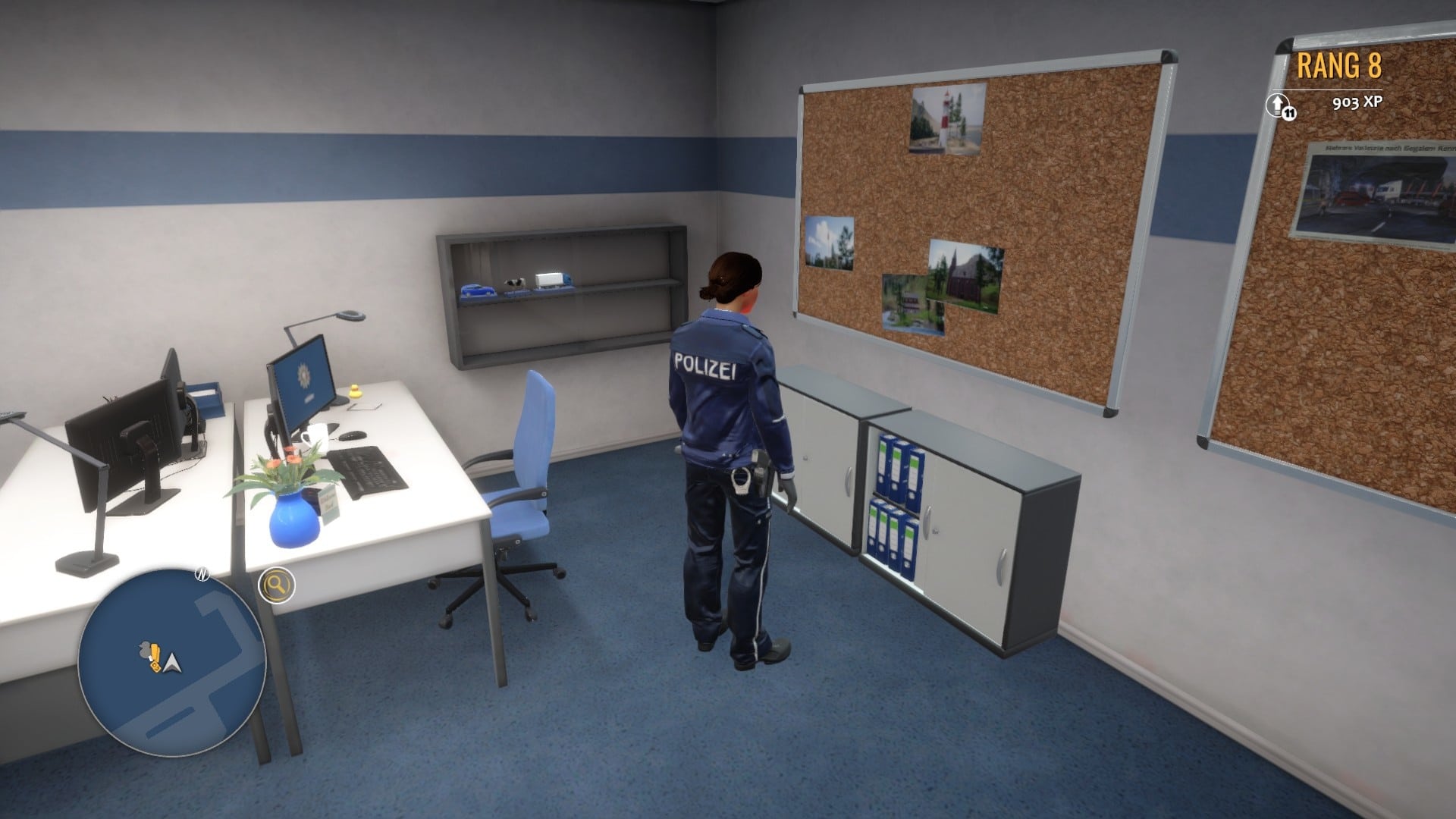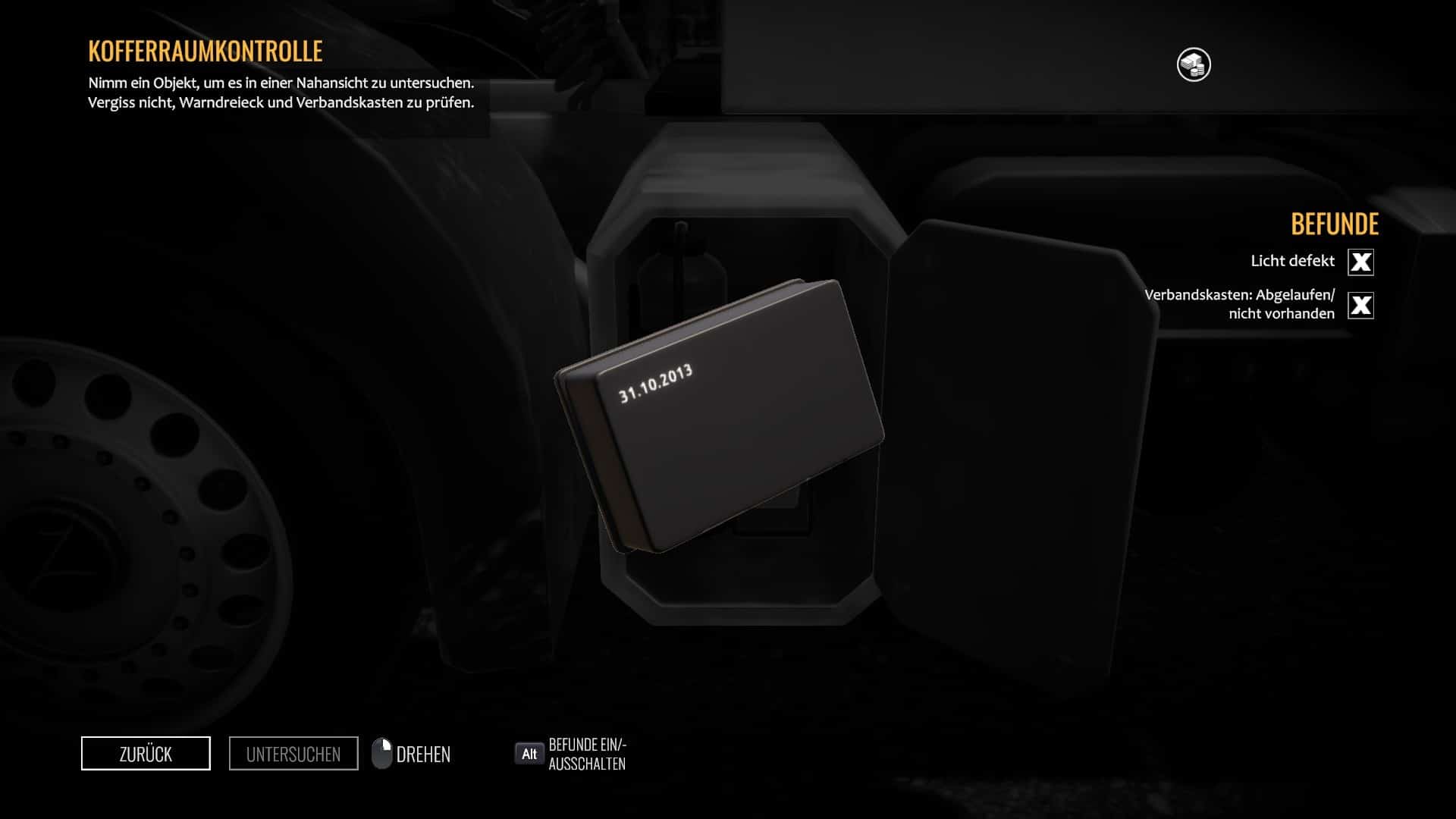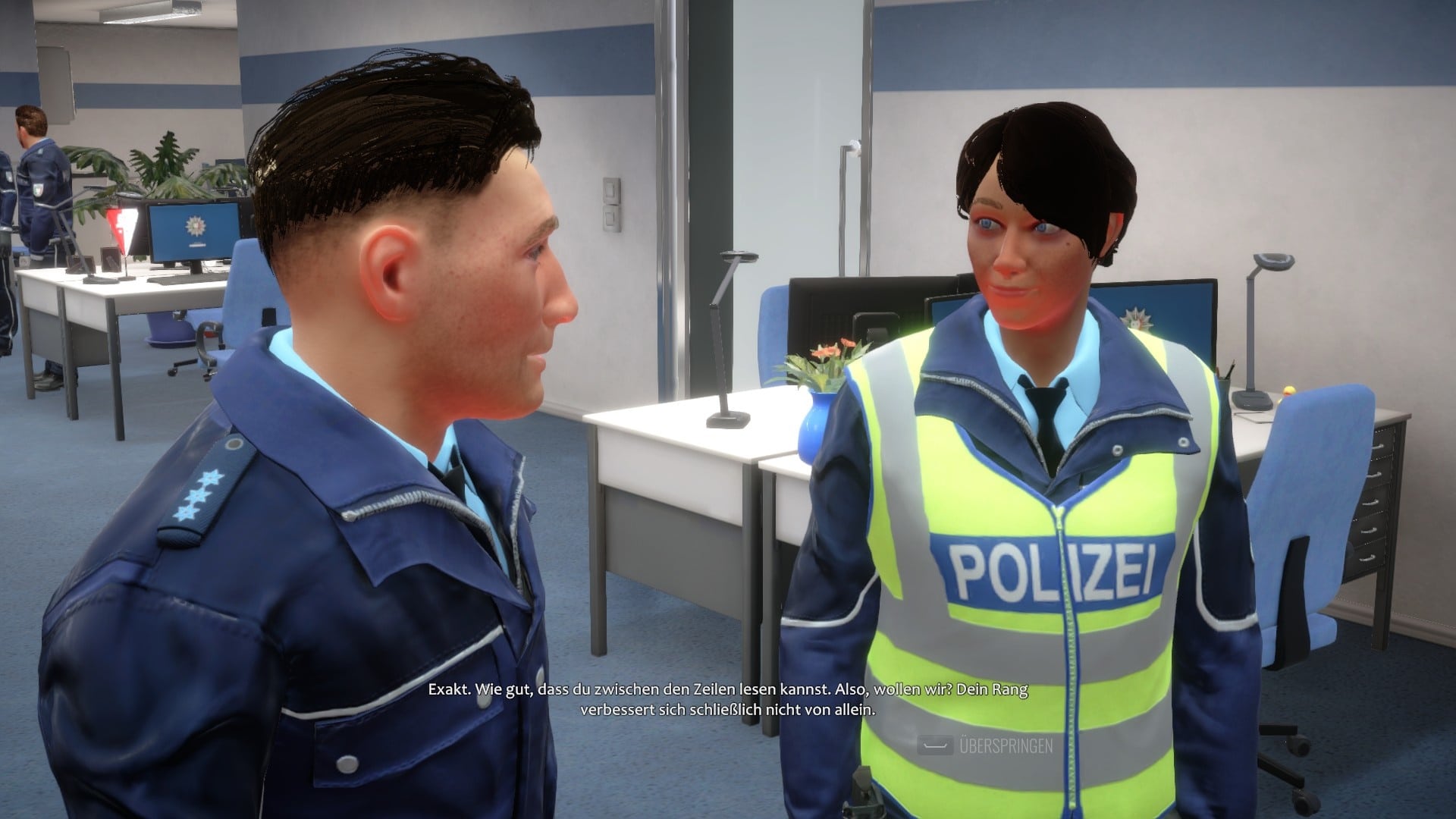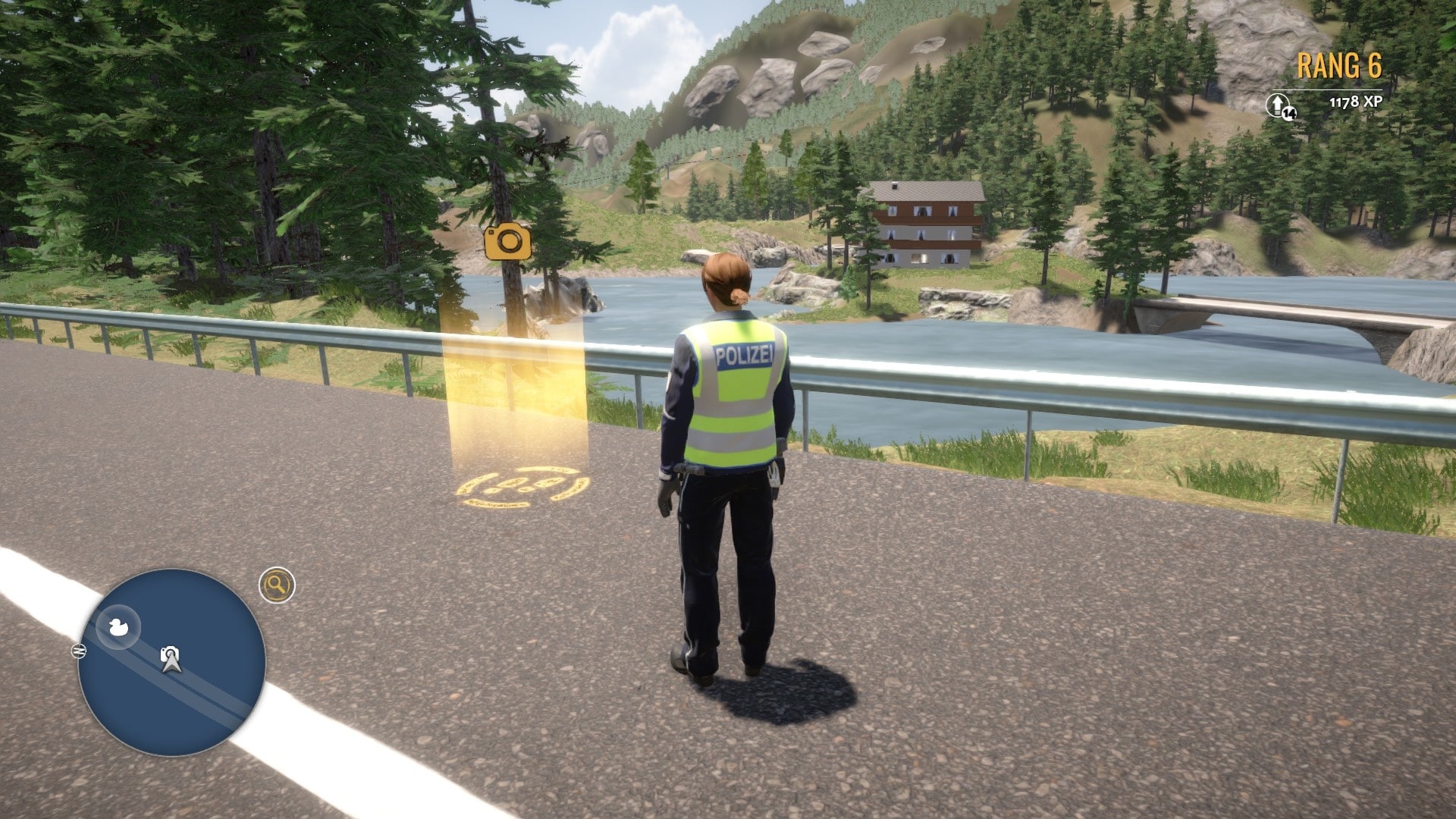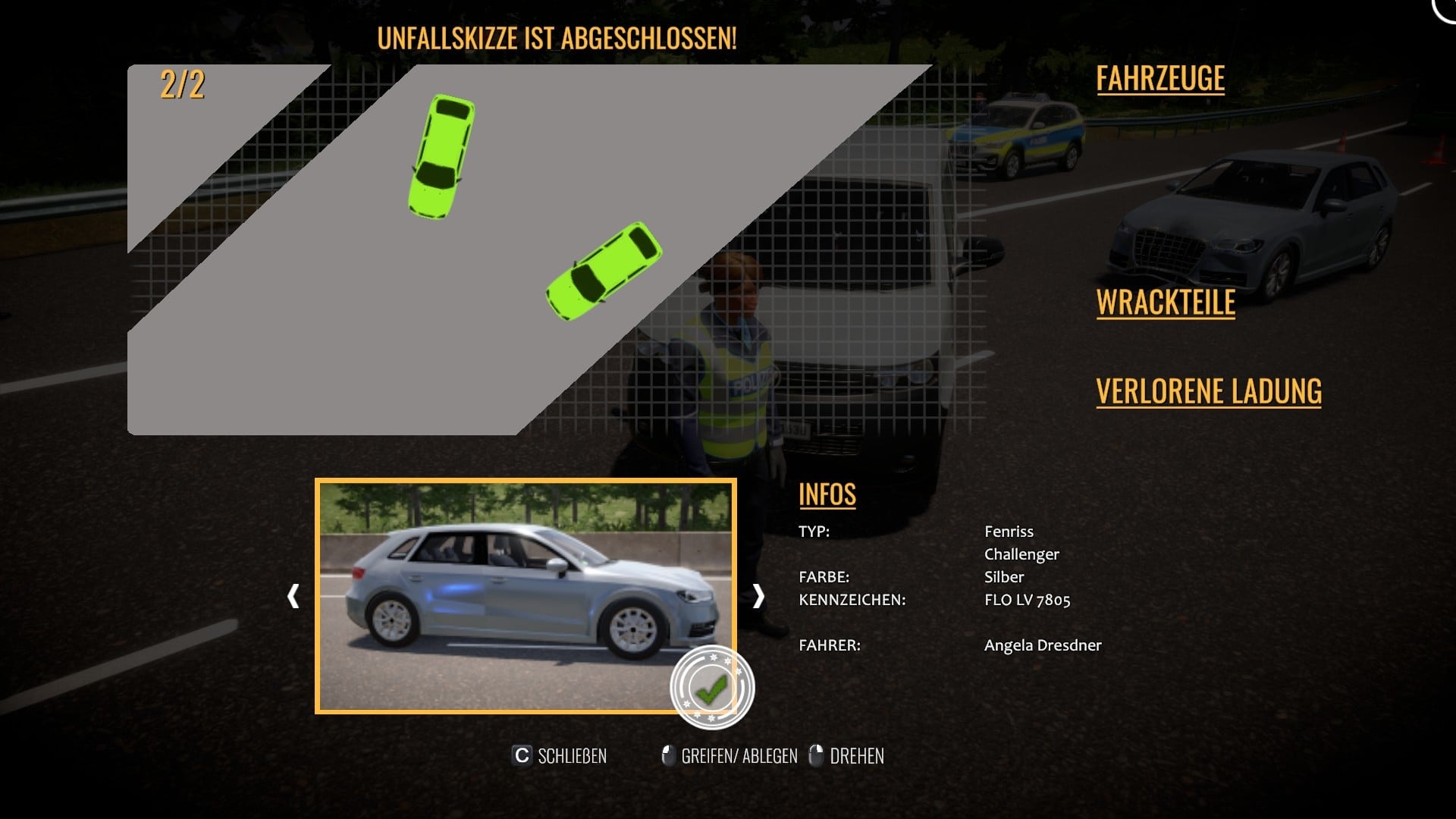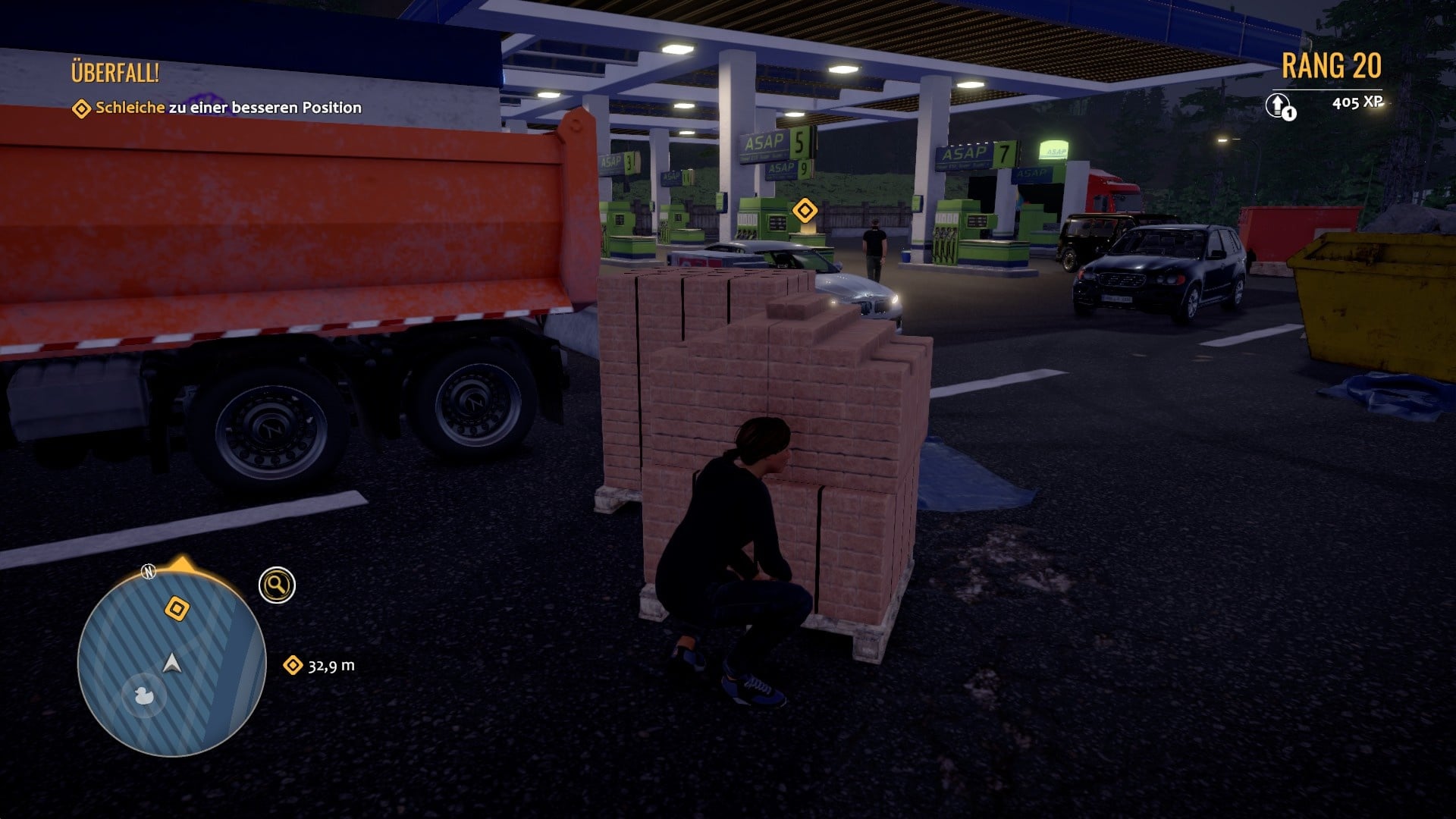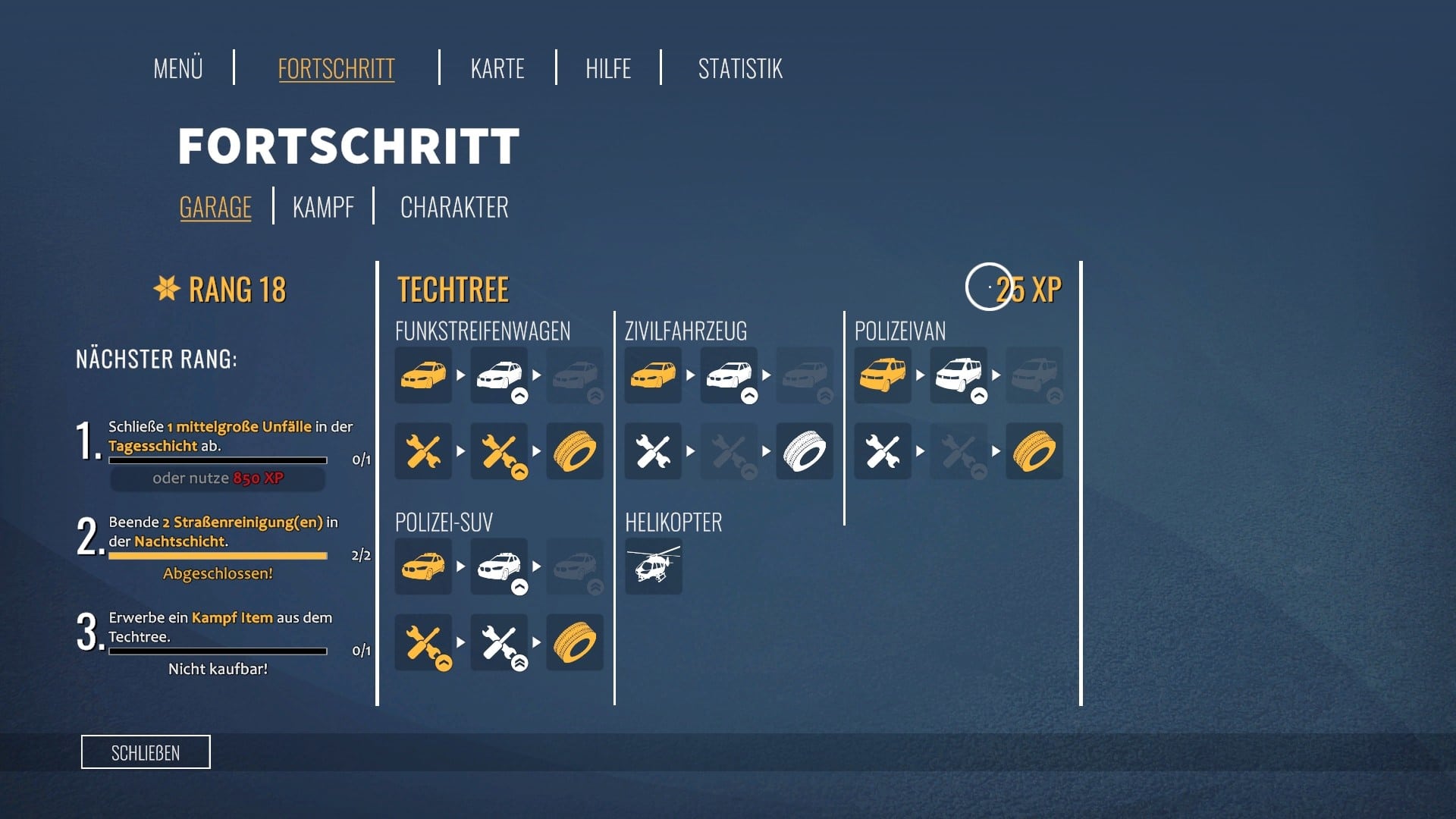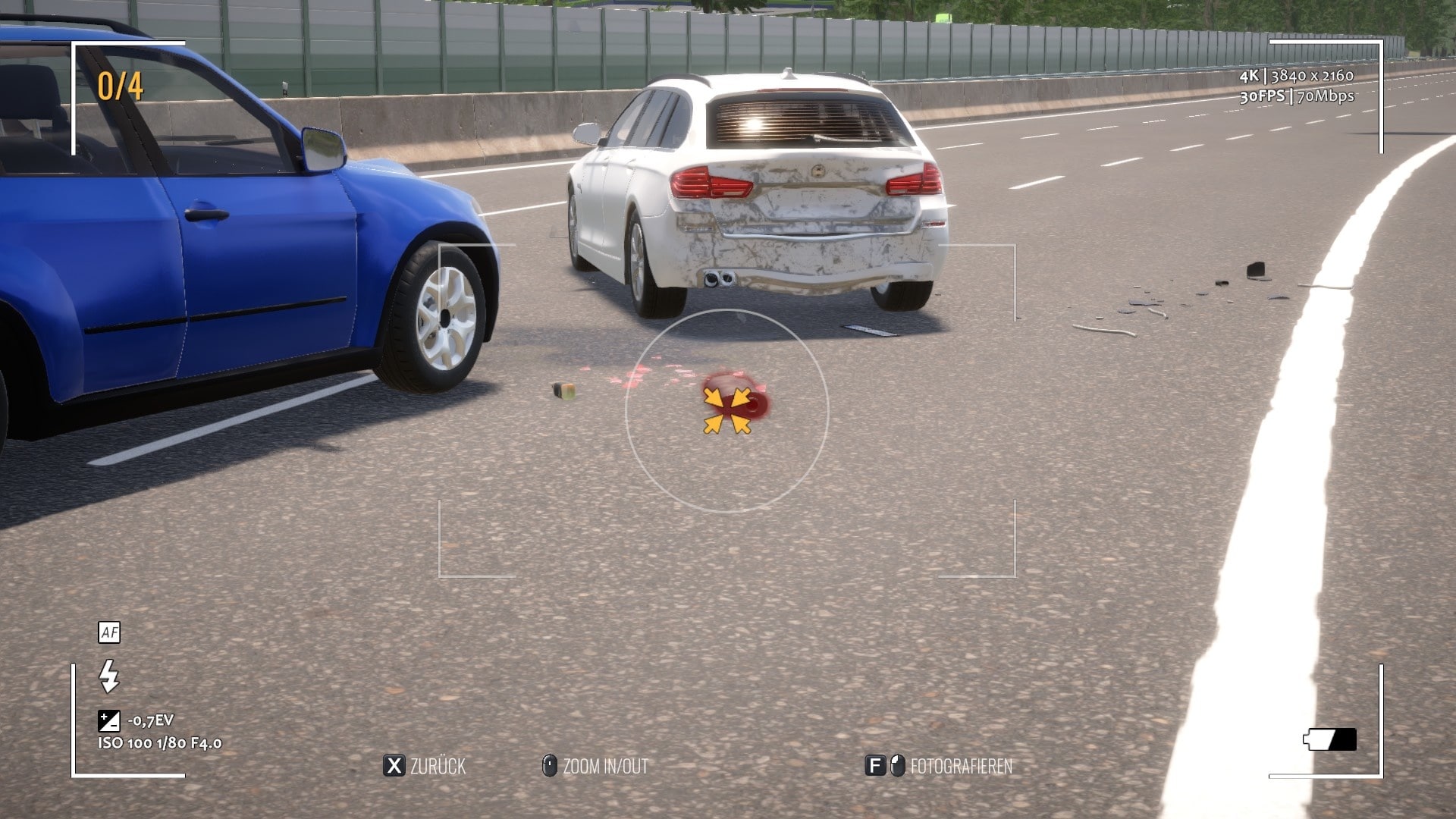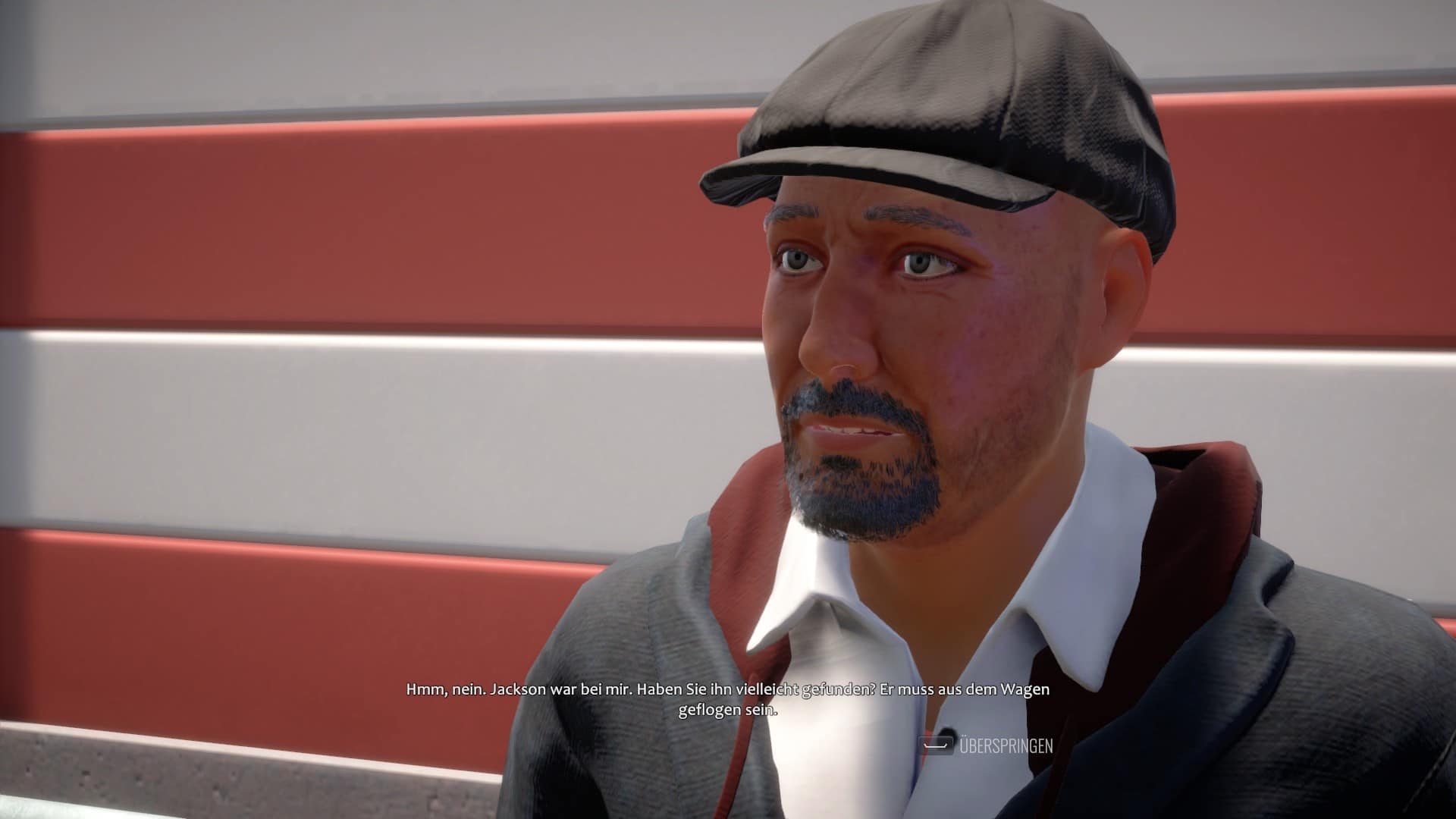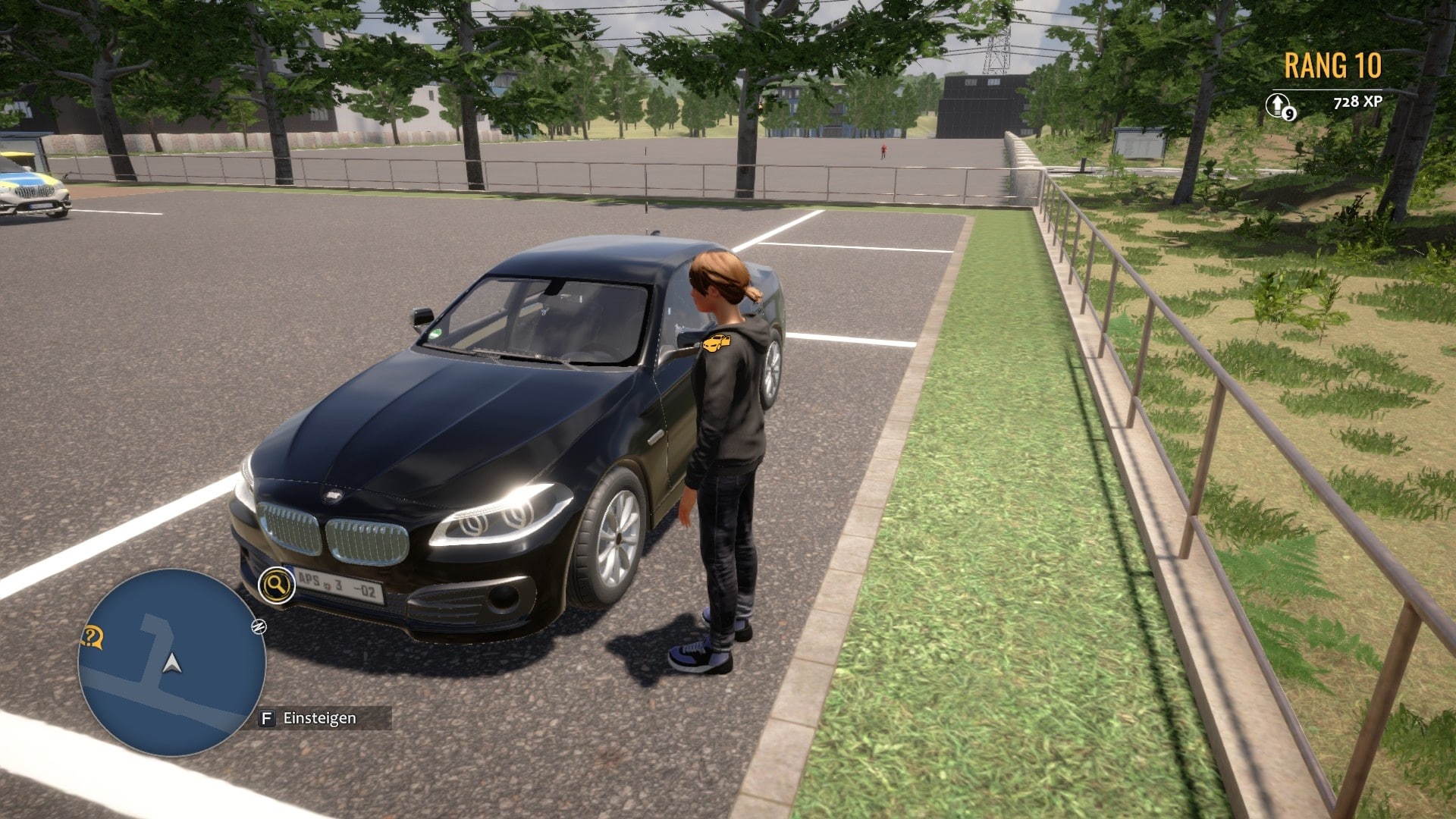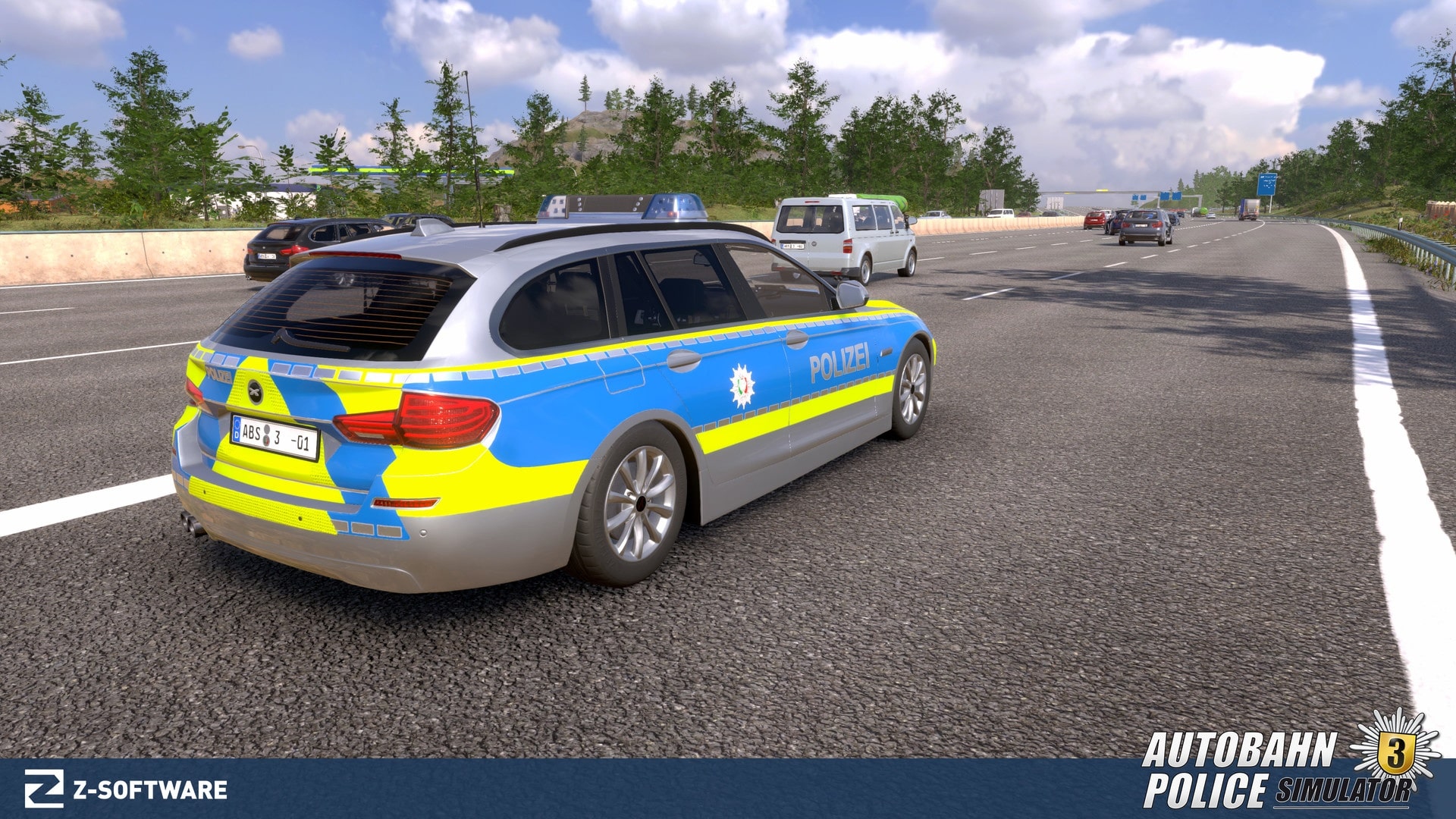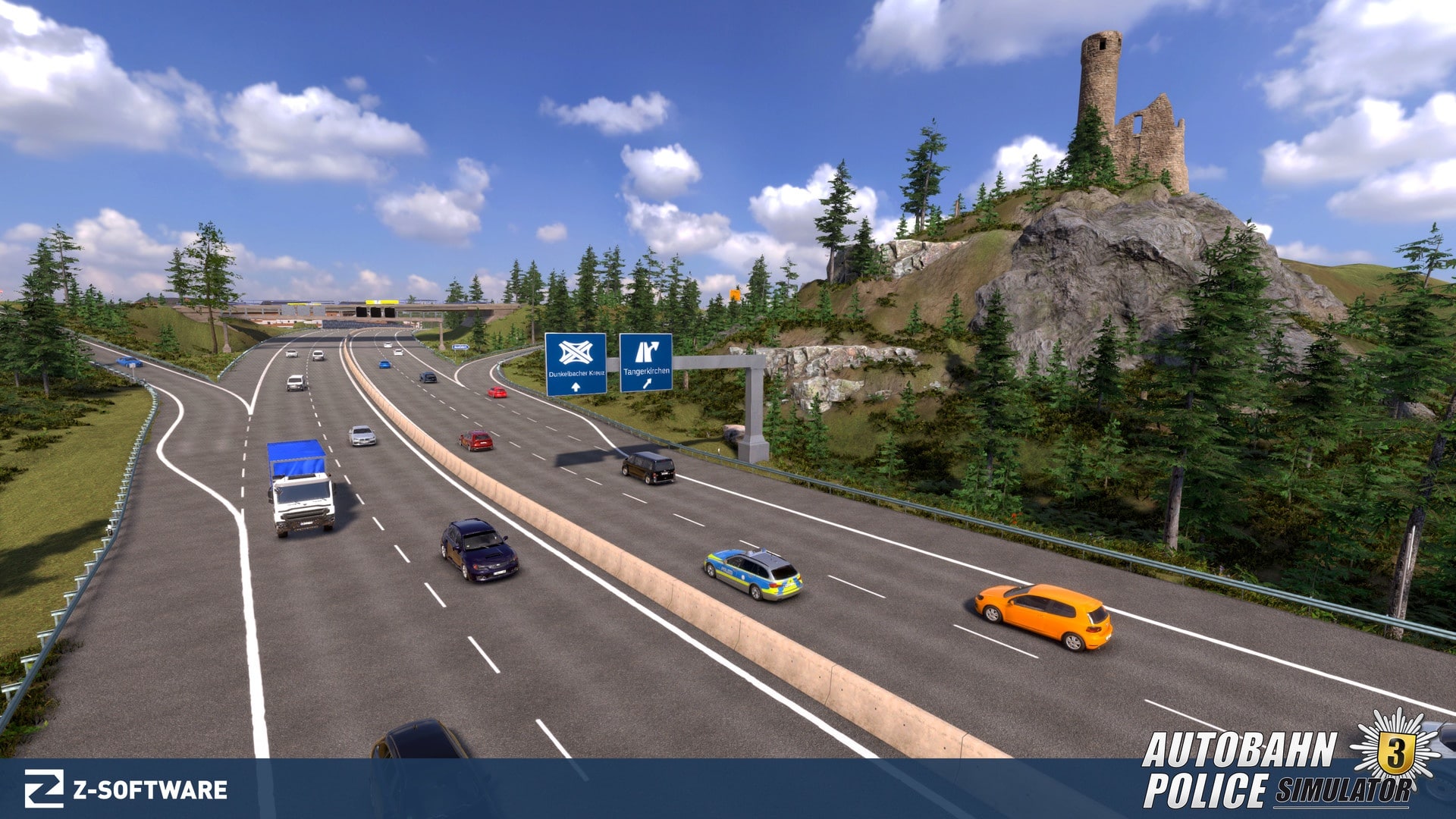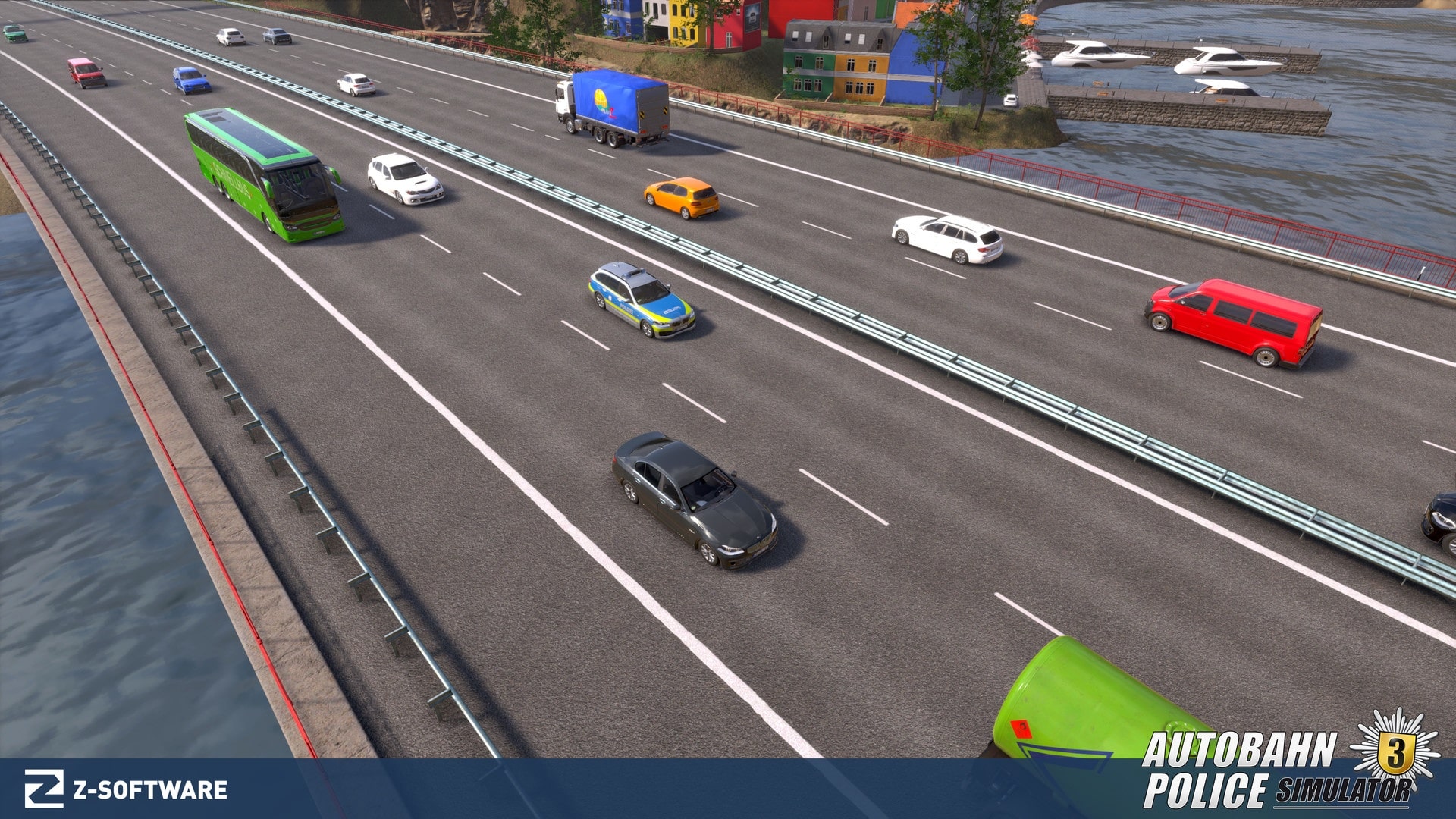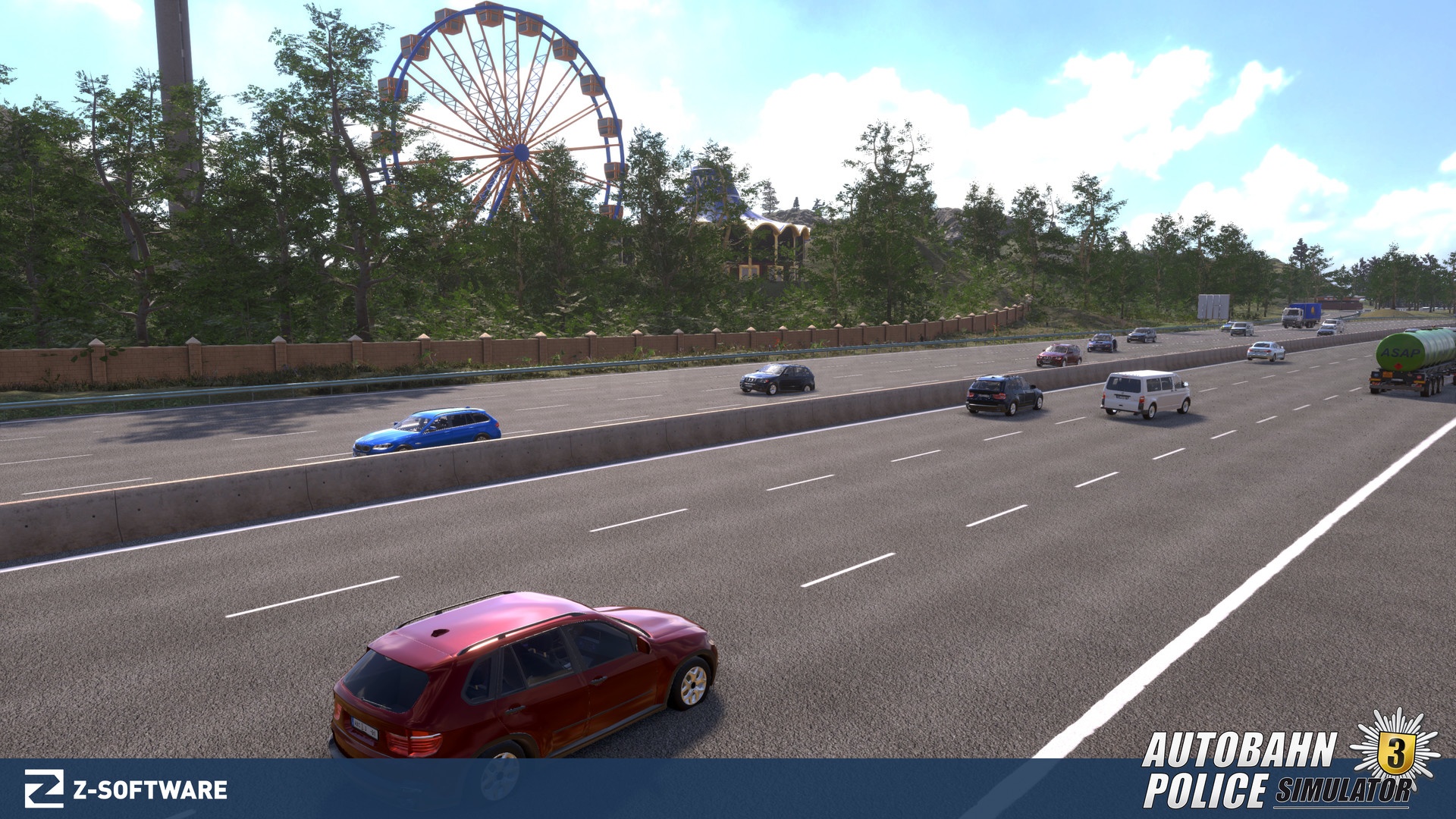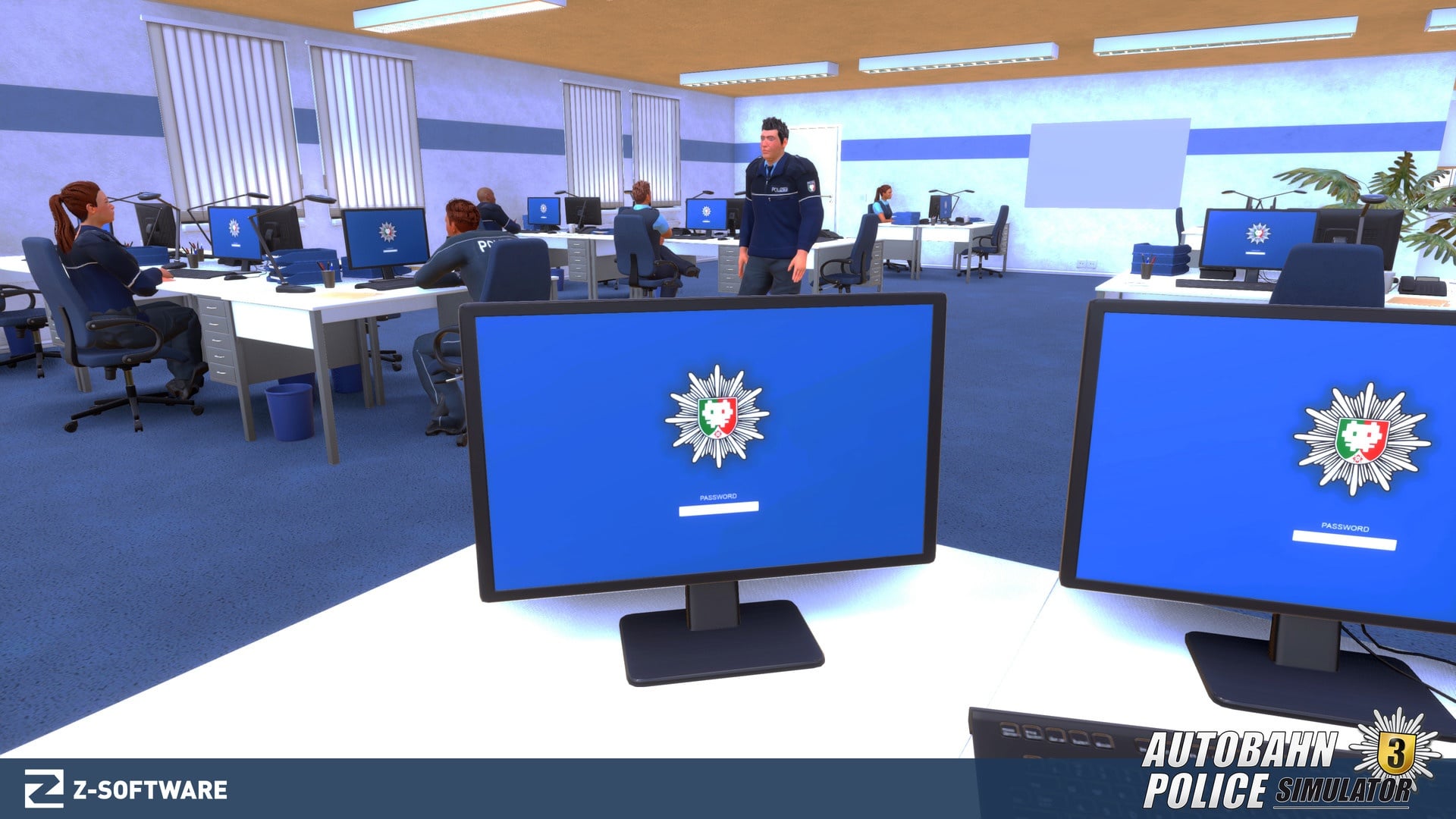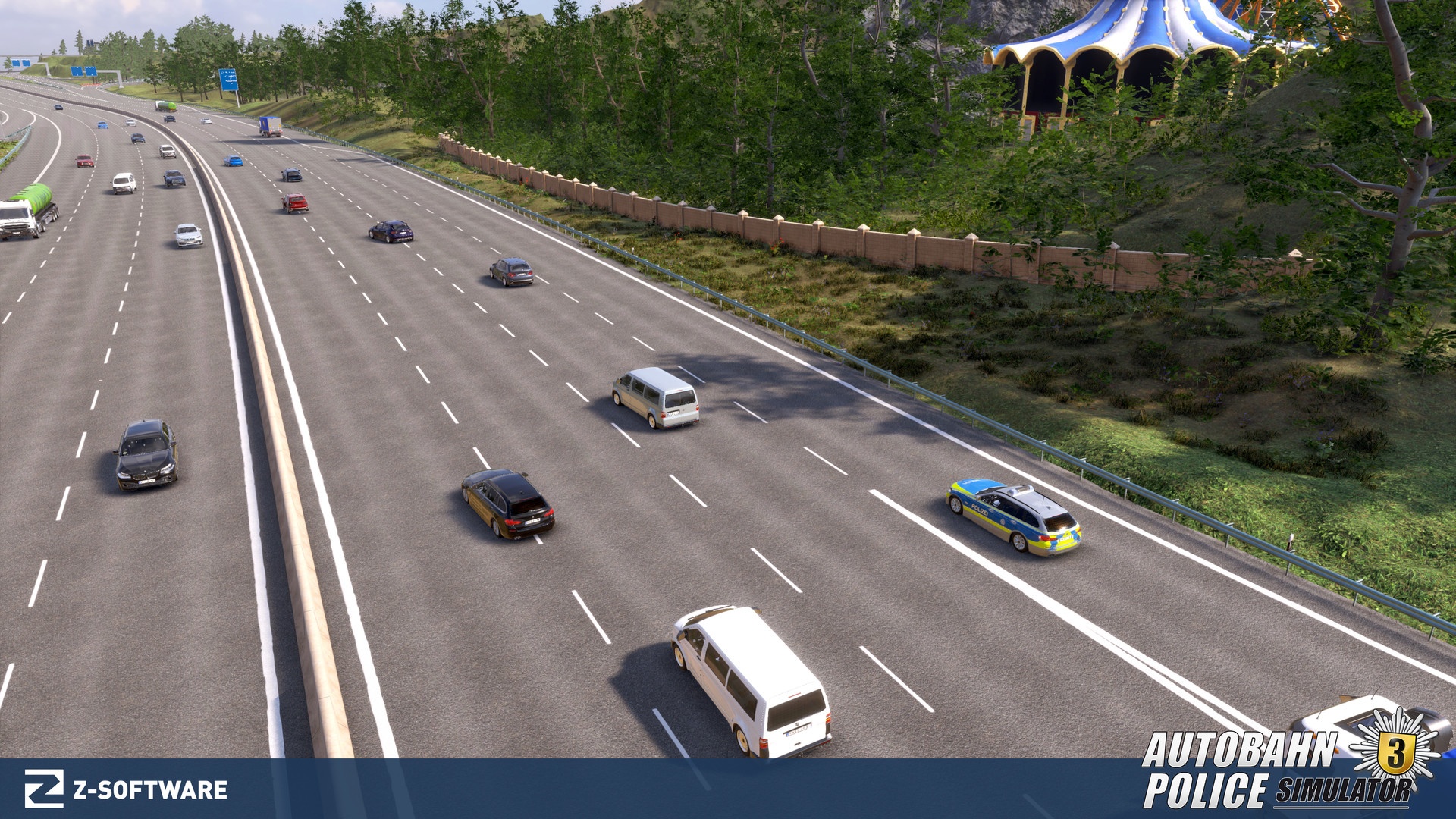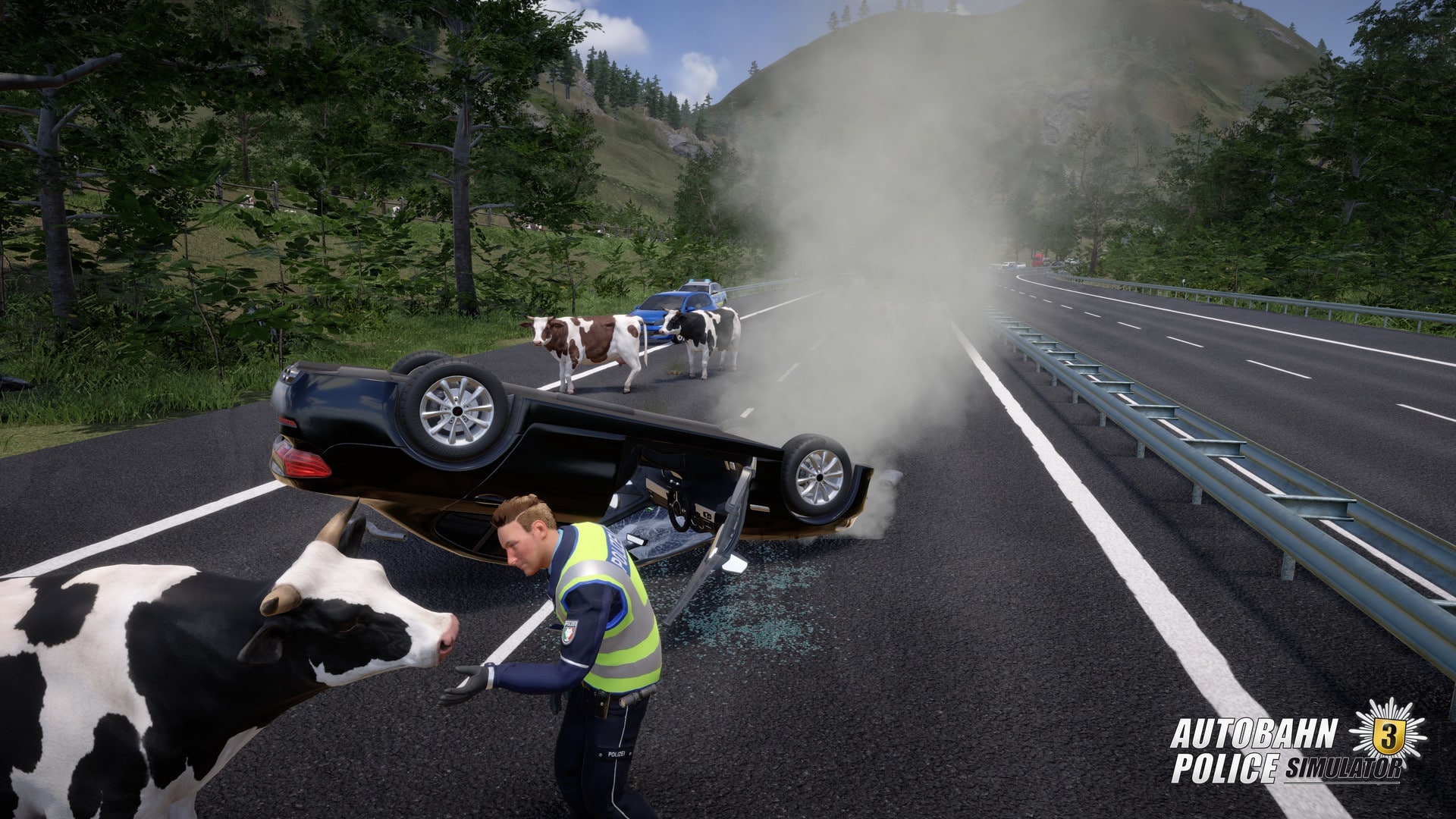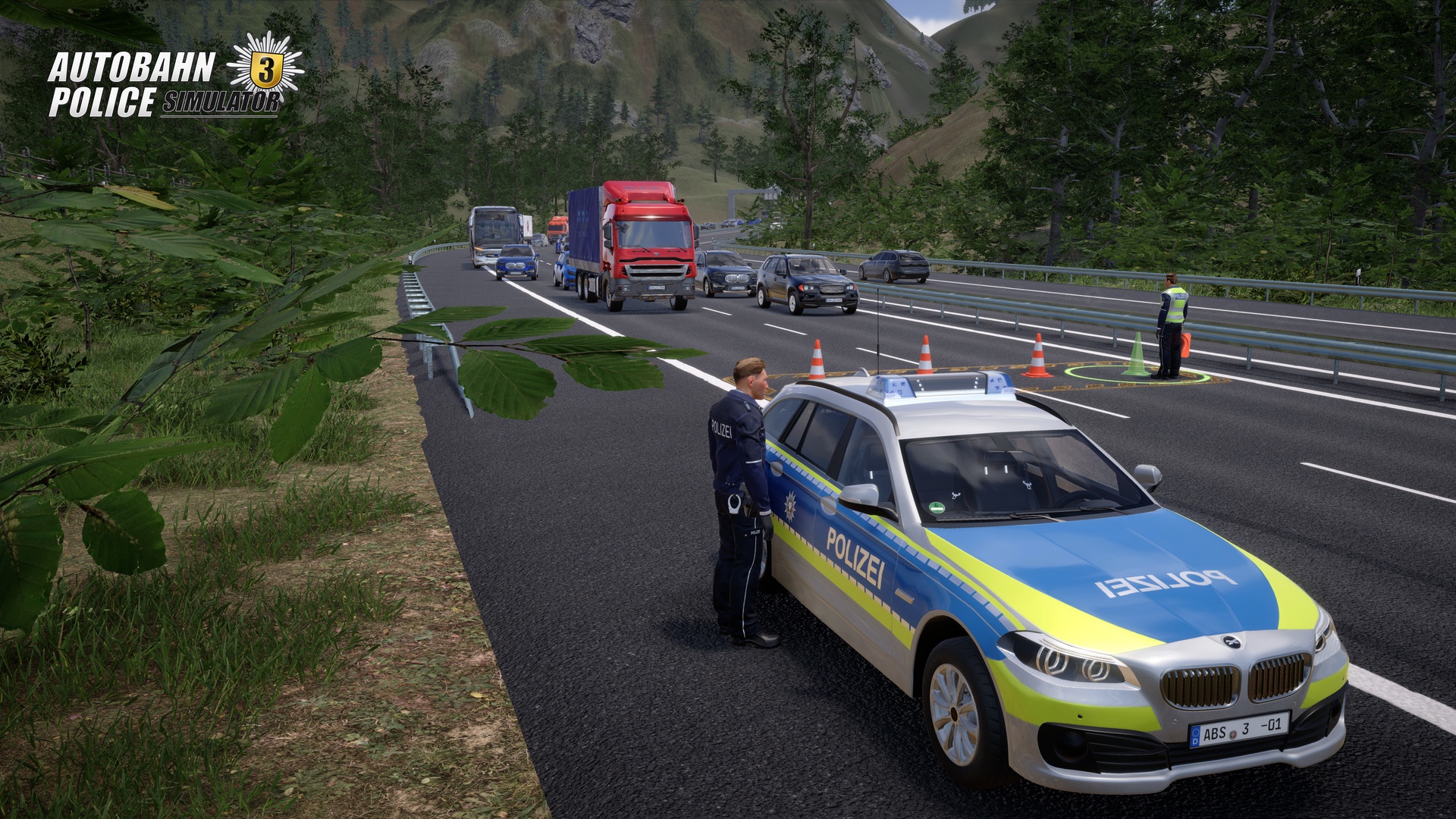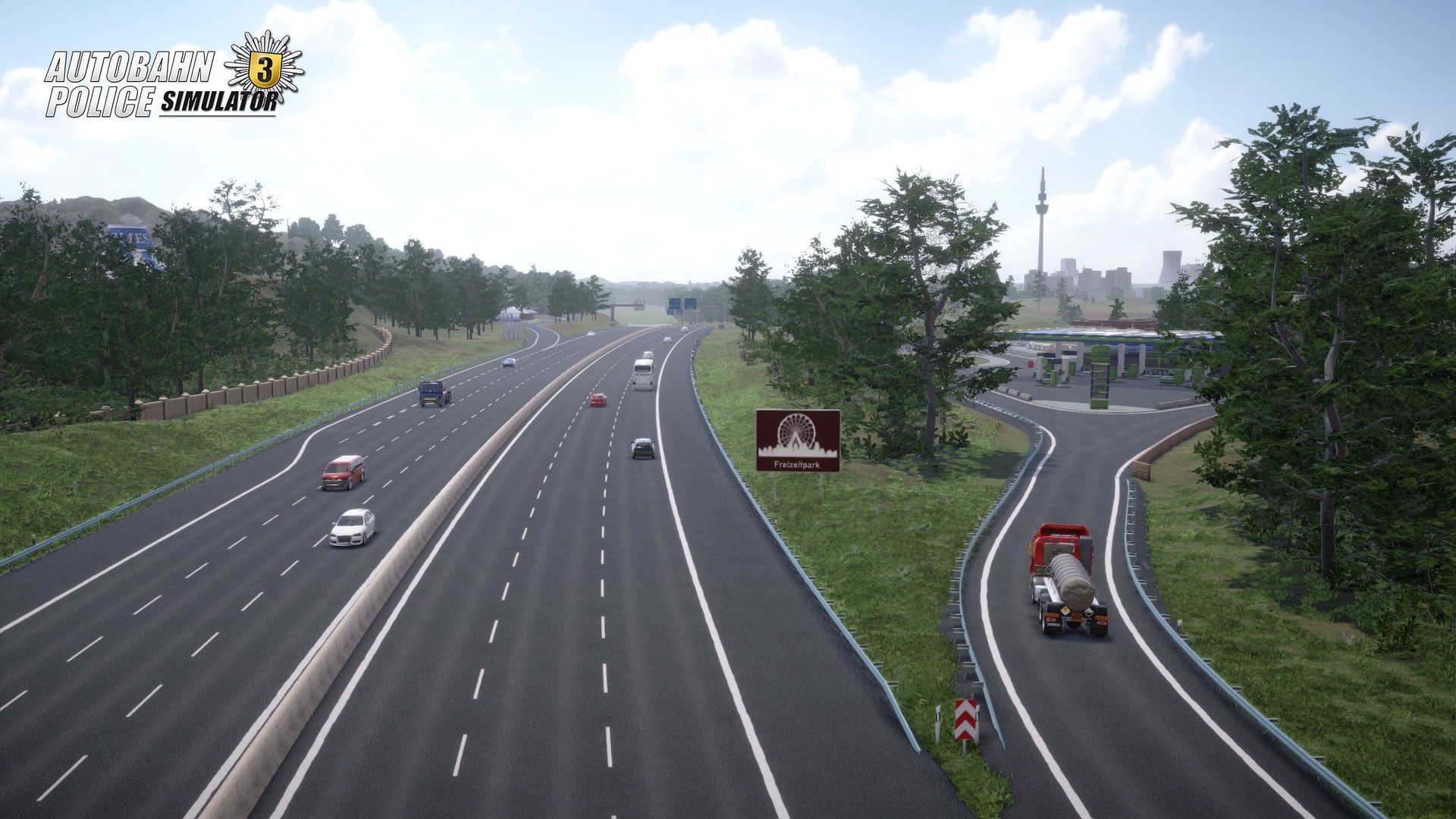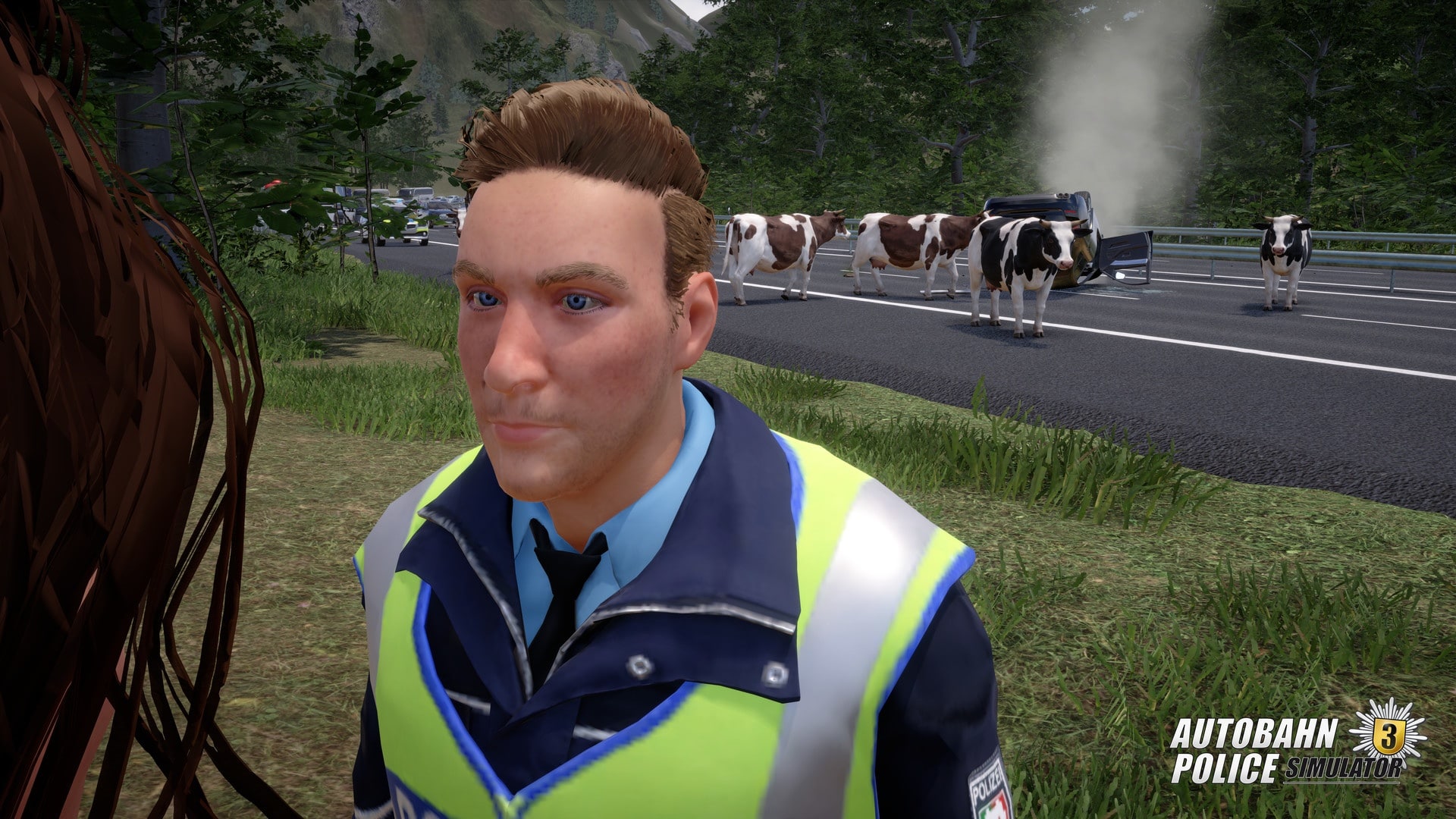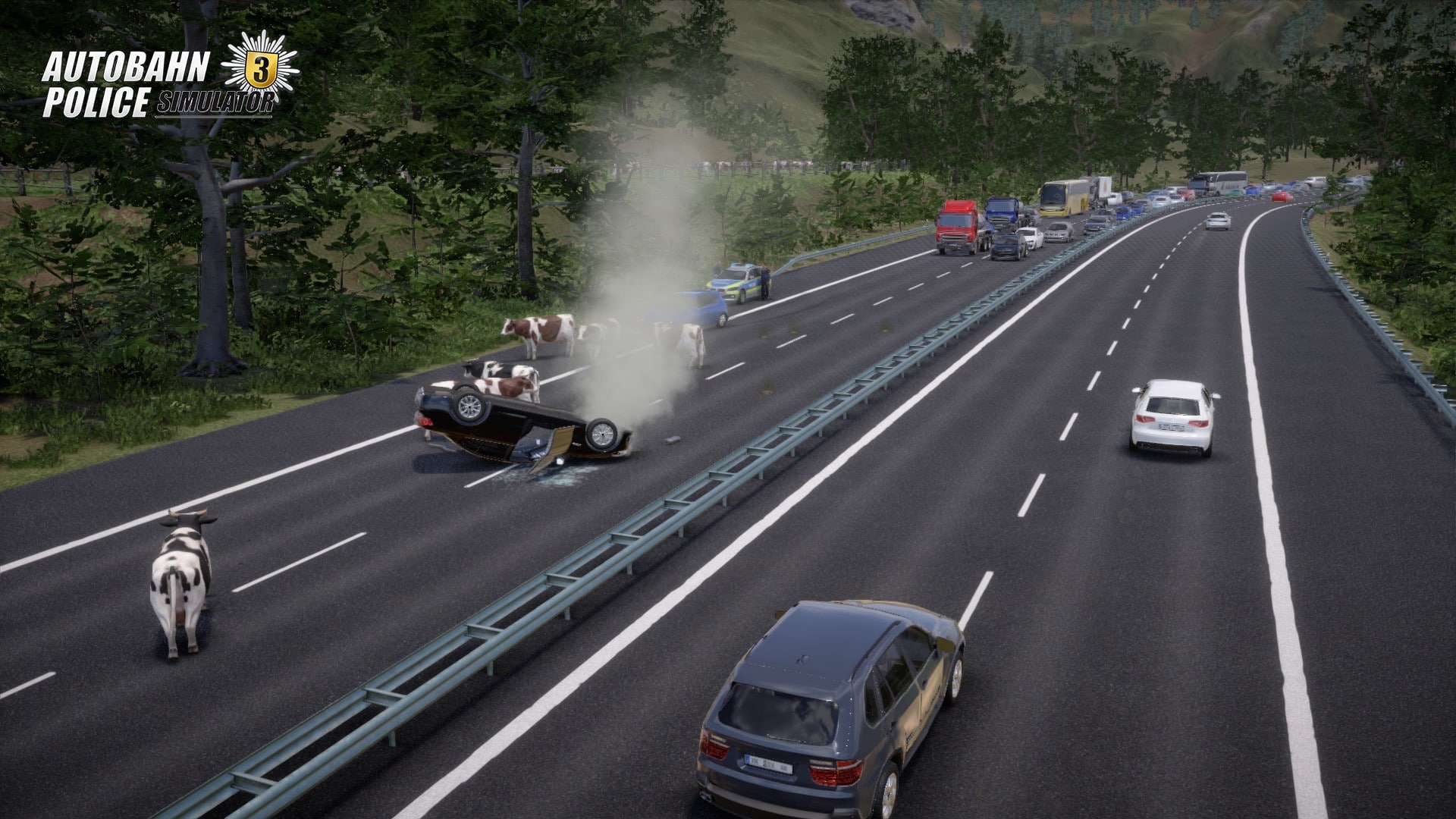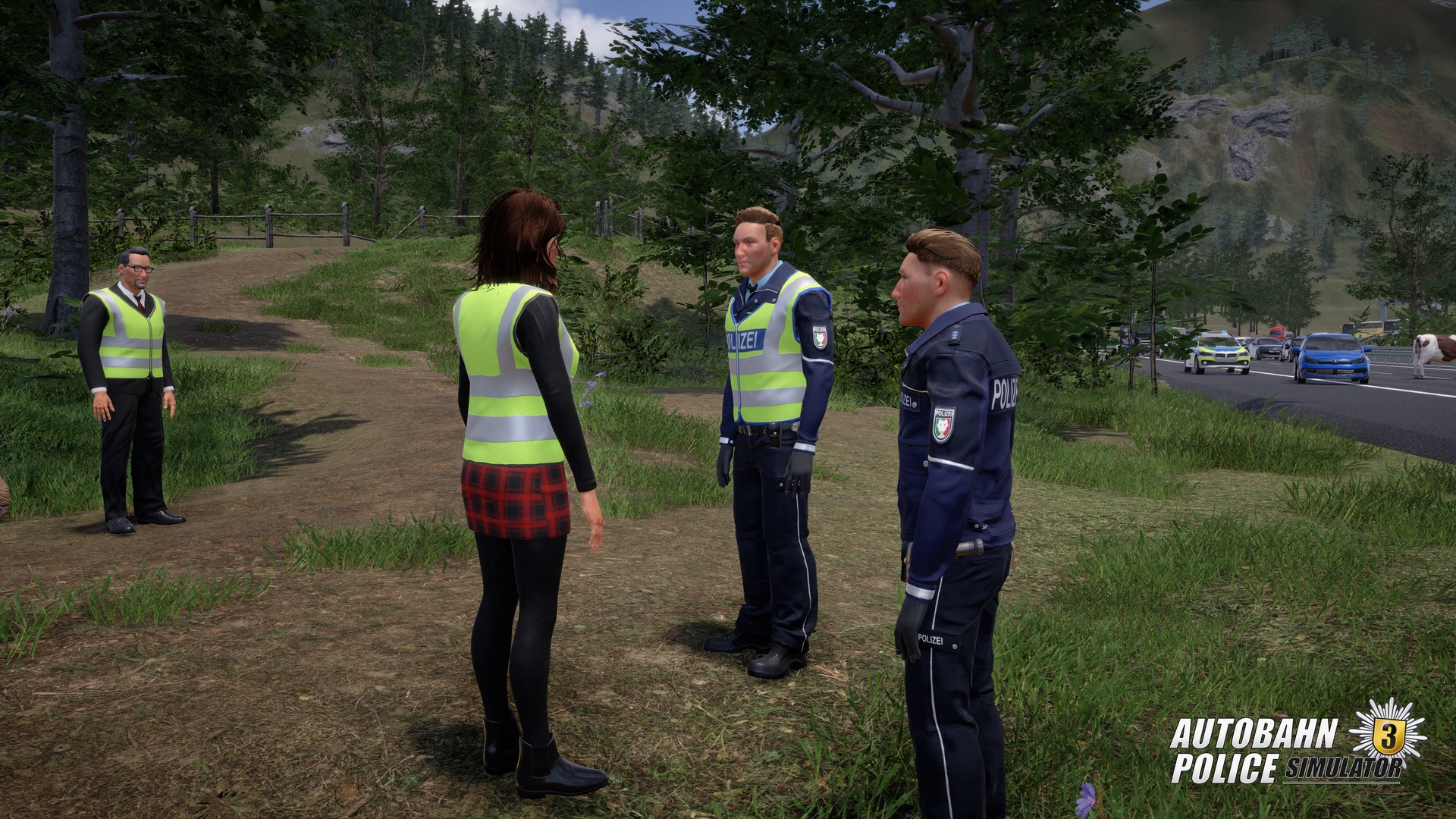Police work is meaningful and can be exciting: This is the feeling Autobahn Polizei Simulator 3 wants to convey. Does it work? Our test reveals it!
Vocational and life simulations always suffer from the same problems. They have below-average to poor performance, visible compromises in graphic design, sometimes gross bugs and often monotonous gameplay. Nevertheless, they enjoy great popularity because of their themes. One can also say: fans of such games – to which the author also belongs – are capable of suffering.
Z-Software”s Autobahn Polizei Simulator 2 (2017) was also an unfinished game with numerous bugs, bad AI of road users and poor performance. But at least the game design was quite varied. Many mission types, several not at all badly staged special missions and a frame story made it quite fun at times. Apparently, enough players and the Federal Ministry of Transport (the latter supported the game with a grant) thought so, too, because now a third part is available in the virtual shop.
In our test you can read whether the problems of the past are finally history in Autobahn Polizei Simulator 3. In the legendary bug video of the predecessor, everyday life with the police trowel, accident prevention and speed measurement was still pretty messy:
So monotonous like real police work? No, worse!
The game principle has hardly been changed. We continue to take part in chases in a German autobahn idyll, close off roads, question accident victims and take photos and sketches of the accident scene. Along the way, we are accompanied by our partner, who is always lazy and yet very arrogant (honestly, he is so unlikeable that we were not interested in the little private dialogues with him).
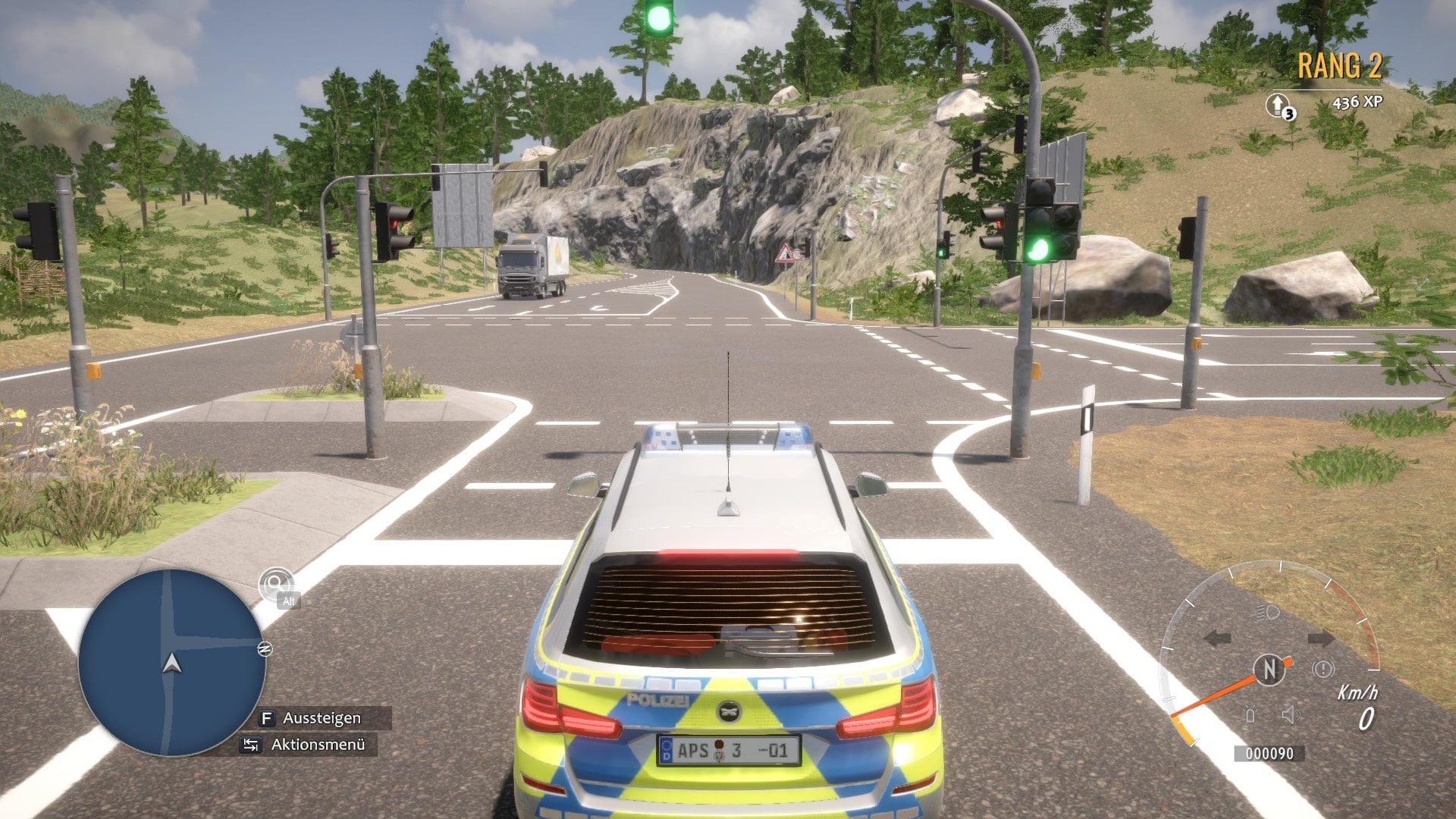
Successful missions and completed collection tasks bring experience points. With them we climb up to rank 50 and unlock further mission variants – the rear-end collisions become bigger, the delinquents more reckless in car chases or petrol station robberies.
In principle, the missions are simple mini-games whose pattern wears out too quickly. The accident investigation, for example, always consists of the same steps: Place barrier cones with millimetre precision, photograph cars and wreckage, collect evidence, draw up an accident sketch with millimetre precision, and question accident victims about what happened. If we don”t forget anything and make use of all the dialogue options, the accident will be cleared up quickly – the goal is to get a confession for maximum experience points.
Unfortunately, the mission logic is sometimes bugged. The correct accident sketch expected by the game does not always correspond to the actual picture on the road. And if we make the mistake of re-interviewing those involved after a confession has already been made (one is curious to know what other dialogue there is), we can suffer from sudden memory loss and end the mission with our colleague saying “Well, I don”t know”, even though everything had actually already been cleared up.
Every five levels, a particularly elaborately staged special mission is unlocked, for example, you have to recapture free-roaming cows. In addition, more of the frame story is gradually revealed. The special missions and story are the salt in the otherwise sober, 50-level soup of everyday police life, and at some point we just levelled up as quickly as possible to make things interesting again.
You get experience points particularly quickly on the traffic training course – a few times in a slalom or circle and you have enough to level up. This is easier and faster than the actual police work. Actually, there is also supposed to be a shooting range, but it is apparently not ready yet.
Alternatively, we invest experience points in a research tree, which is unavoidable nowadays and as expected irrelevant. With this we unlock new vehicles and improve our character, for example with more dialogue options or more ammunition.
By the way, there is a patrol car, an SUV, a minibus and a civilian vehicle. It”s best to drive them with a gamepad to have more control over the spongy steering; the steering wheel control doesn”t work yet, although the steering wheel is already displayed in the settings.
Improved characters, dull open world
Unlike in the predecessor, we can no longer design our character freely, but choose from a few presets. This should prevent the creation of too crude (and thus ugly) combinations. The NPCs have also learned a little more taste with regard to clothing style and hairstyles. The models and animations of the figures have been visibly improved. Unfortunately, strange camera perspectives still ensure that we can sometimes look directly into the skulls of the characters.
The game world is a typical German Autobahn idyll, scenically something between the Ruhr and the Black Forest. Our playground is located on the edge of an industrial estate. We only see a few foothills in the background from the associated city, industrial area or beach. The map is not very large, but the 1:1 scale means that longer journeys are necessary to get to the location – in itself a nice opportunity to drive fast legally.
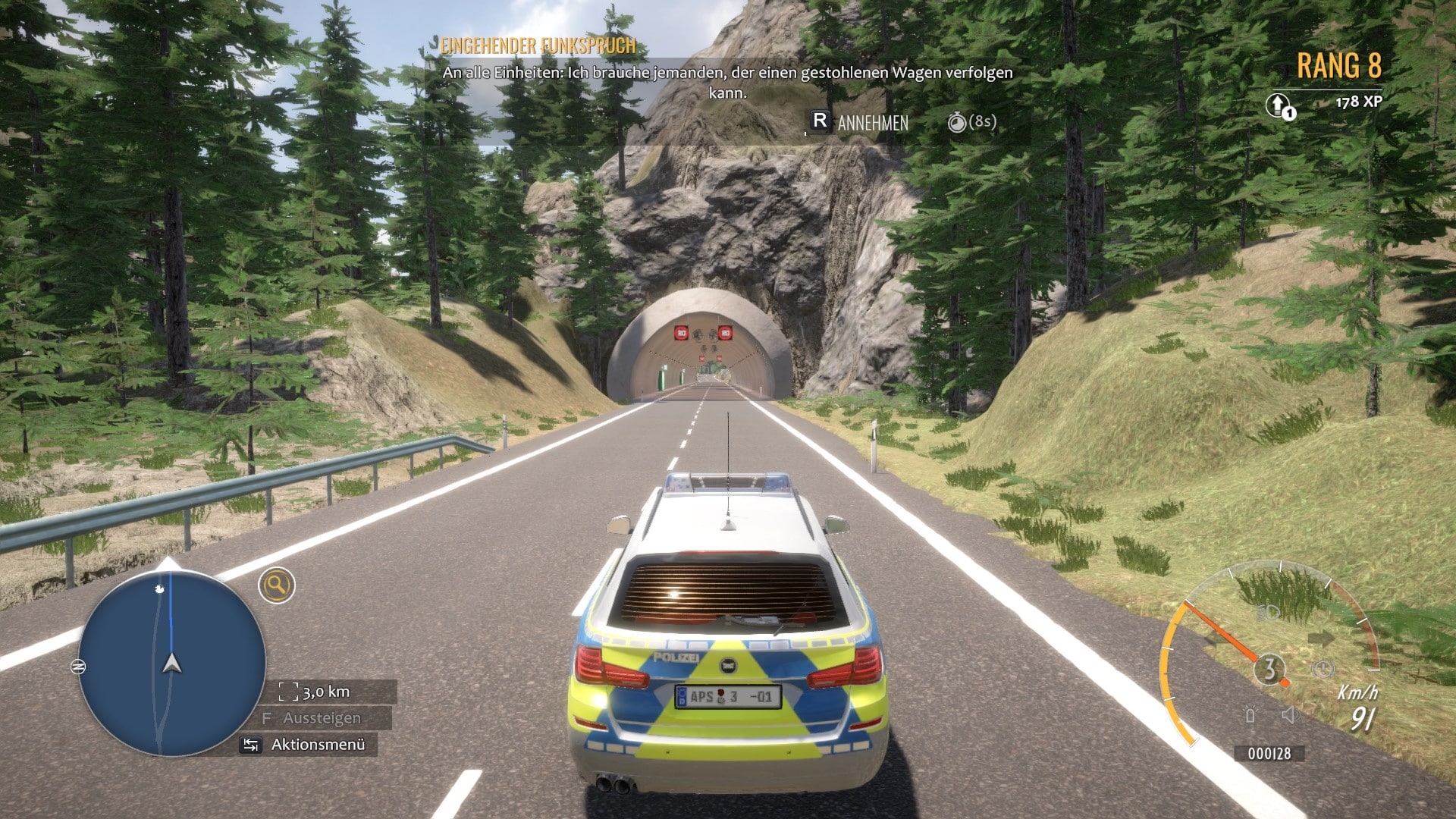
We like the basic layout of the map, although it is explored really quickly at 200 speed. Unfortunately, the visual realisation is very plain, so it”s not much fun to take a closer look at the world or do the photo collection tasks. It all looks very template-like and “flat”, sterile and monotonous.
Motorway Police Simulator 3 continues to use the Unity engine, which is inexpensive but not necessarily the best choice for this type of game. Meanwhile, other professional simulators, such as Astragon”s Police Simulator: Patrol Officers, rely on the Unreal Engine 4. Several Aerosoft games, such as Fernbus Simulator, The Bus, TramSim and even the even more niche Straßenmeisterei Simulator, also use the Unreal Engine. The results of such games are also far from AAA productions, but at least they conjure up atmospheric lighting and weather effects on the screen. Unfortunately, Autobahn Polizei Simulator 3 lags behind here.
Editorial conclusion
The Autobahn Polizei Simulator 3 is a proof of concept whose potential shines through especially in the special missions. There you can see: There”s a good game hiding here somewhere. The third part avoids the very worst failures of the predecessor – the disastrous AI traffic in APS2, for example, is now halfway usable and corresponds to the genre standard (which always has room for improvement, regardless of the manufacturer).
Unfortunately, the game is not finished. There are still bugs that seem easily avoidable, for example the creepy interior views of human skulls caused by strange camera perspectives, or the sudden teleportation hundreds of metres away during some dialogues or traffic controls. Apart from bugs, the poor performance is also noticeable – no matter what the graphics settings are.
However, I was particularly annoyed by the lack of features that are mentioned in descriptions and help texts. Why do tasks explicitly talk about the “day shift” when there is no night shift? Why does a story mission take place “in the evening” when it is still noon in the game? Why should I take care of my car when there is no damage and no workshops anyway?
Please, dear developers and publishers, take the time and invest the money to play through your games completely several times, and pay professional beta testers who know how to do this and what to look out for! Or opt for the Early Access model. It”s just a shame when a promising game makes an unnecessarily bad first impression because of time and release pressure.

